Maschinenmosaik
Collaborative mural
Funded by Senatsverwaltung für Kultur und Europa
In spring 2023, I had the opportunity to create a permanent public artwork for one of East Germany's oldest prefab quarters, Anton‑Saefkow‑Platz in Berlin. Hundreds of neighbors participated in the creation of the piece, which spans over 500m² and is named “Maschinenmosaik.” Making it involved an arcade machine on wheels, called the “Mosaikmaschine,” a cutting plotter, and local graffiti artists.
Below are three interactive panoramas, showing the finished artwork. You can swipe/drag to explore them.
Index
Background
In the early 1970s, Anton‑Saefkow‑Platz was developed. High-rise buildings, made from prefabricated concrete slabs (Plattenbauten) were erected on a square next to Fennpfuhl, a park with a little pond. Fountains were created for the square and sculptures were installed in the park. Many of the houses' facades featured large artworks, often in the form of mosaics. Those always resonated well with me, as I am a big admirer of the aesthetics of that era.
Artists:
Dieter Gantz and Rolf Schubert
Photo:
Collection Stadtmuseum Lichtenberg
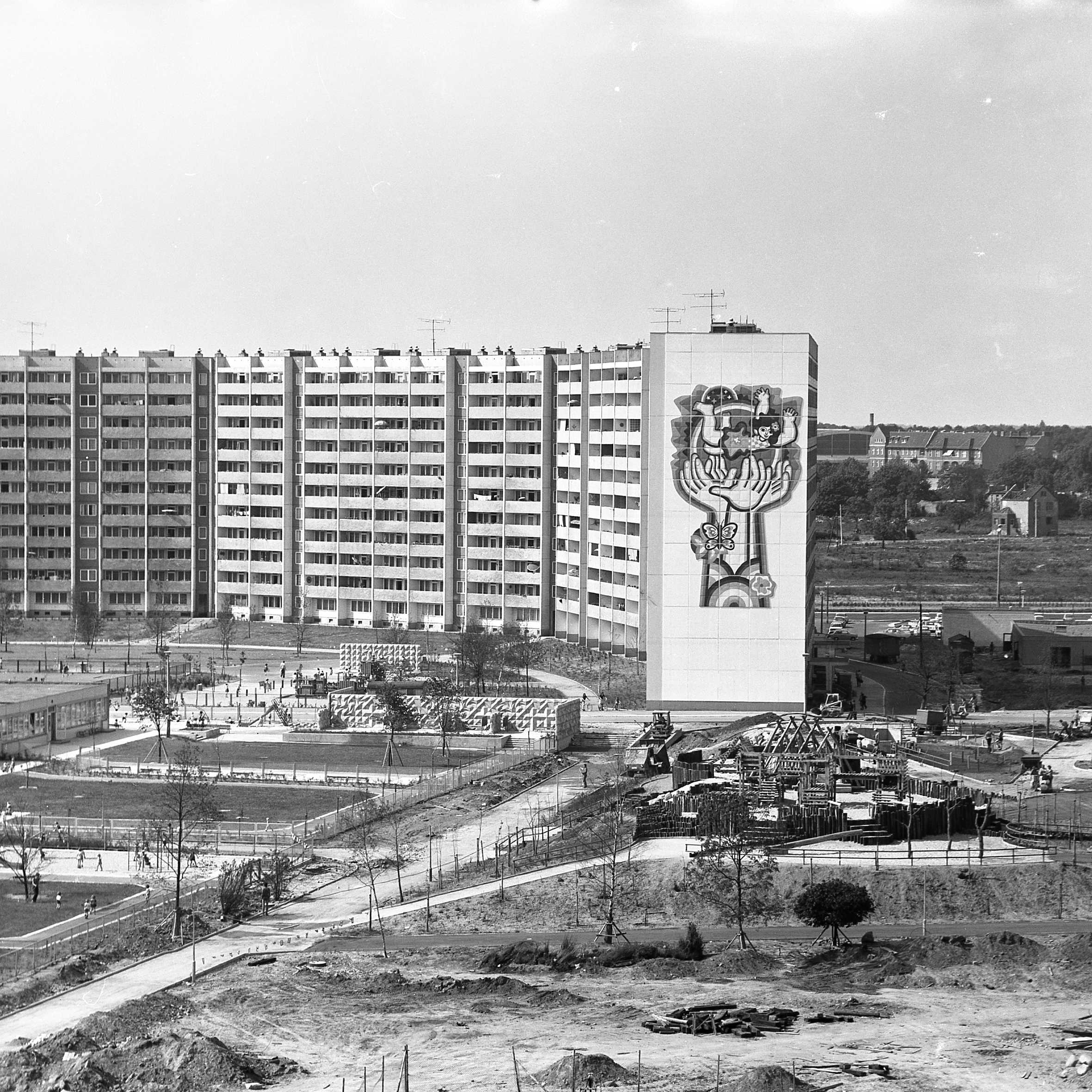
Fast forward 50 years, and things have changed. Artworks on the facades were covered with thermal insulation. Some of the fountains have broken and disappeared. The sculptures, as well as the concrete walls in the entrance areas, have been discovered by sprayers, which left many of the residents unhappy.
It was time for some new art, and the local authorities, in collaboration with a housing association that owns many buildings in the area, organized an art competition.
I participated in the competition and suggested to build a mobile arcade machine that would invite the locals to create new mosaic designs for the concrete walls in the entrance areas. The mosaic patterns would be cut into stencils and spray-painted onto the walls. With my concept, I aimed at bridging the gap between public mosaics and contemporary graffiti culture by creating a large spray-painted community mosaic. My proposal won, and I was awarded the contract to carry out the project. This made me exceptionally happy, as I am also living close to that area. What could be nicer than having a lasting impact on your own neighborhood?
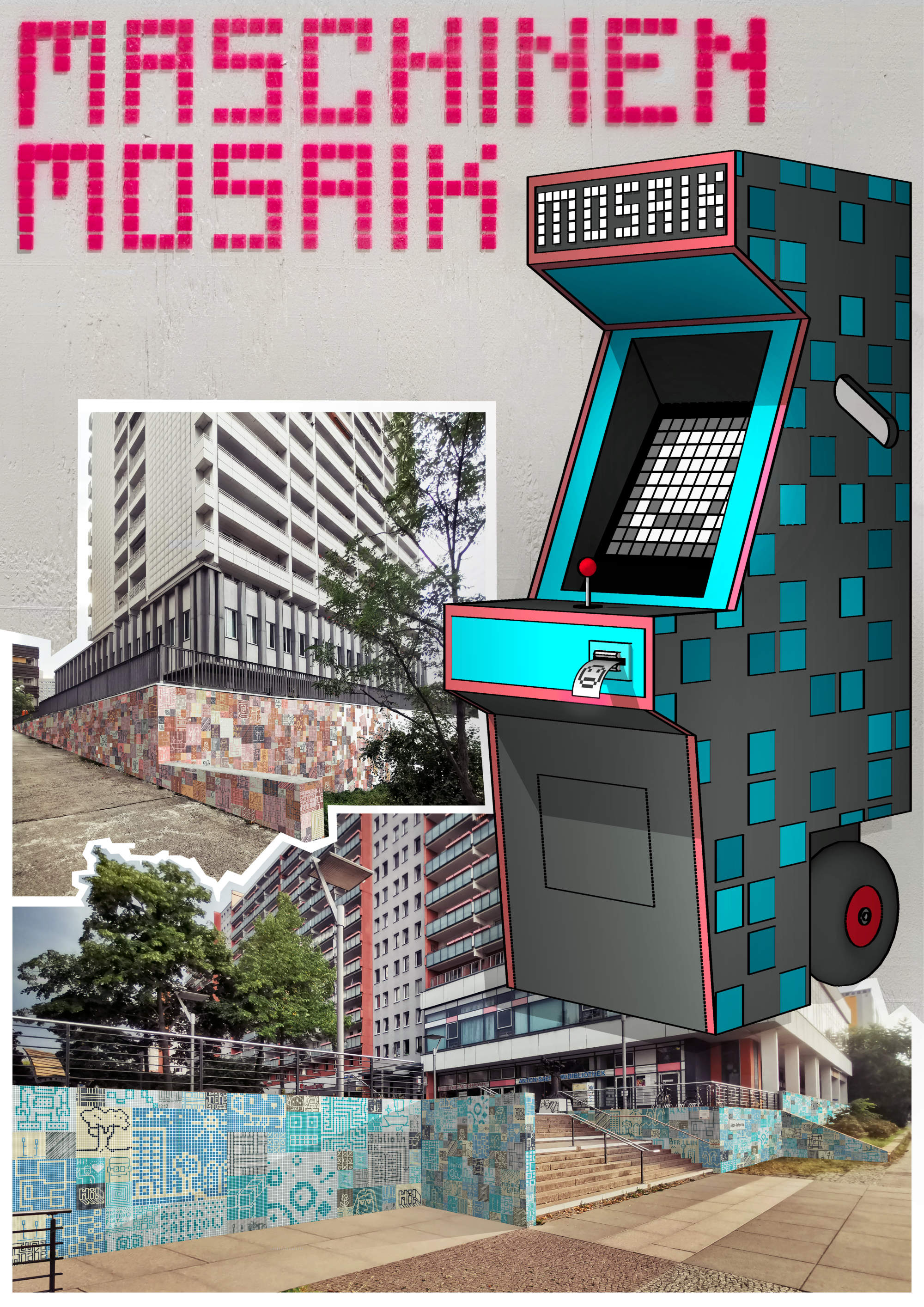
Making the Mosaikmaschine
I started the project by constructing the Mosaikmaschine, an eye-catching arcade machine that would later visit different places in the neighborhood and which would invite everyone to contribute their creativity to the upcoming new artwork.
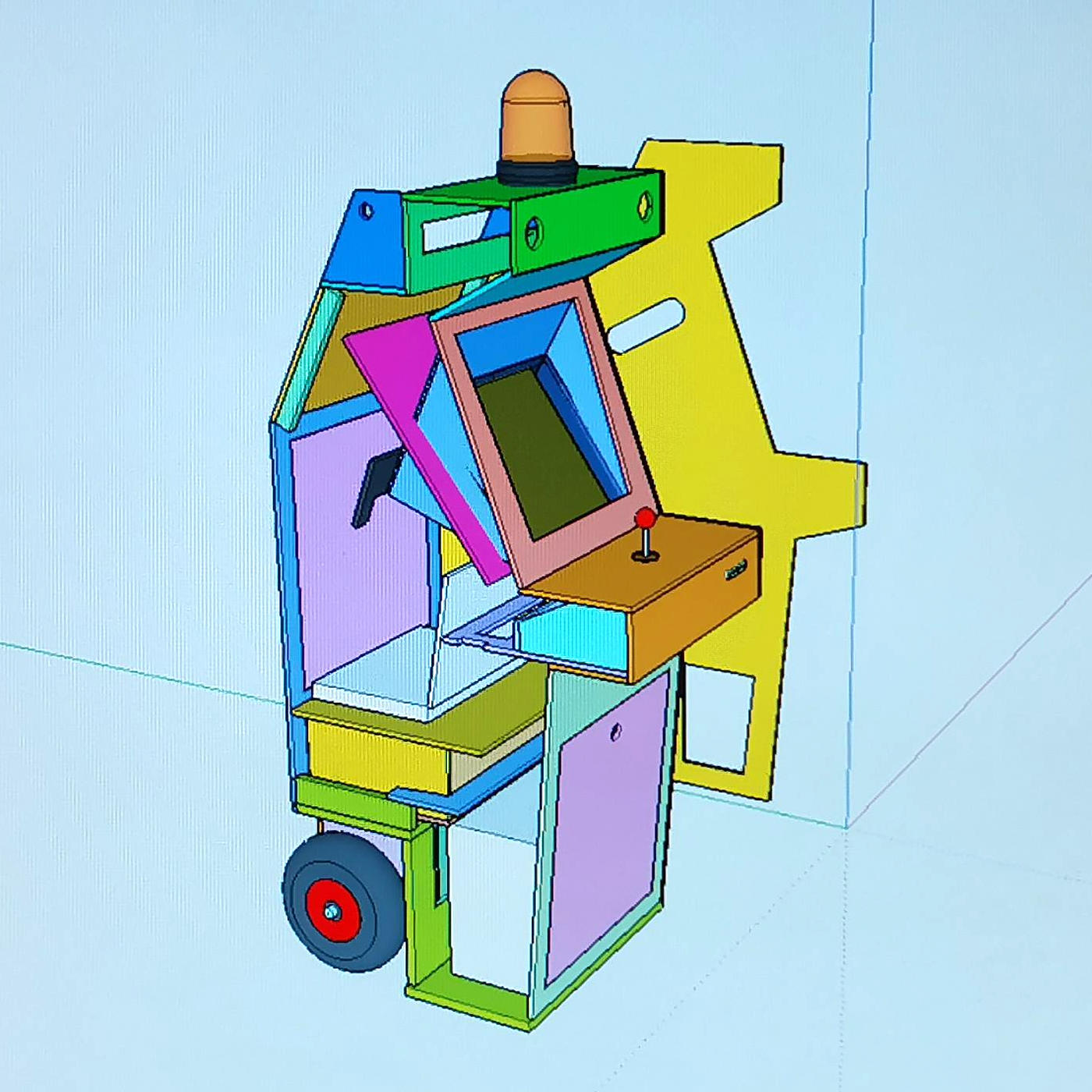
The shape of the machine was designed in Sketchup and I scaled it to two-thirds the size of a normal arcade cabinet for better mobility and inclusivity. The compact size makes it easy to be used while seated and it's also accessible to people of all heights. After finishing the plans, I built the cabinet out of lightweight plywood.
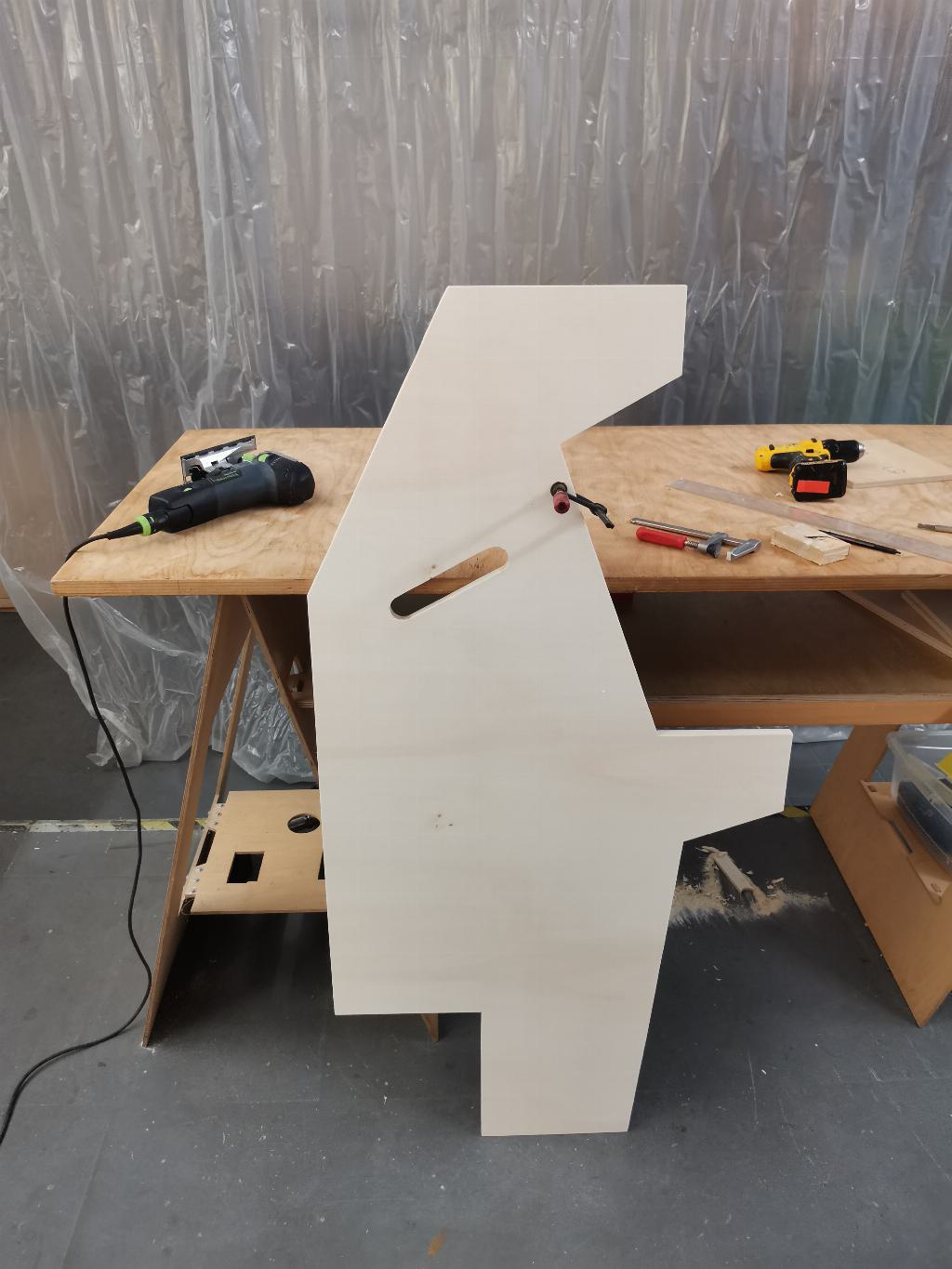
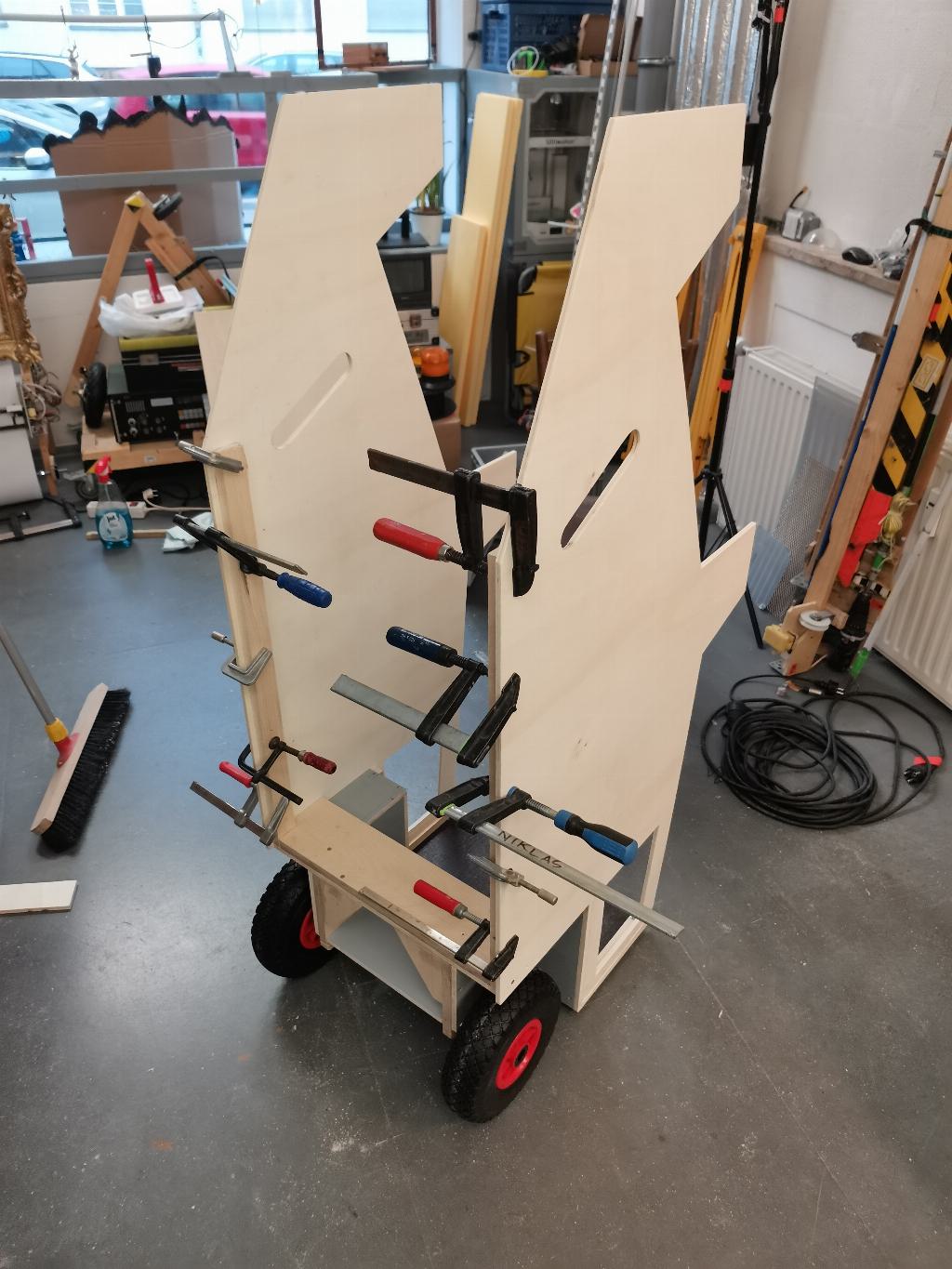
For the electronics, I modified an old flatscreen to function in bright daylight. I replaced the original backlight with the brightest LED ceiling lamp I could get. The machine also includes a laptop, a thermal receipt printer and a mobile wifi router. The joystick and the arcade buttons were connected via an Arduino to the computer and so was the orange beacon. Last but not least, there's a 1KWh power station inside the bottom of the cabinet, which provides enough electricity for an entire day of autonomous operation.
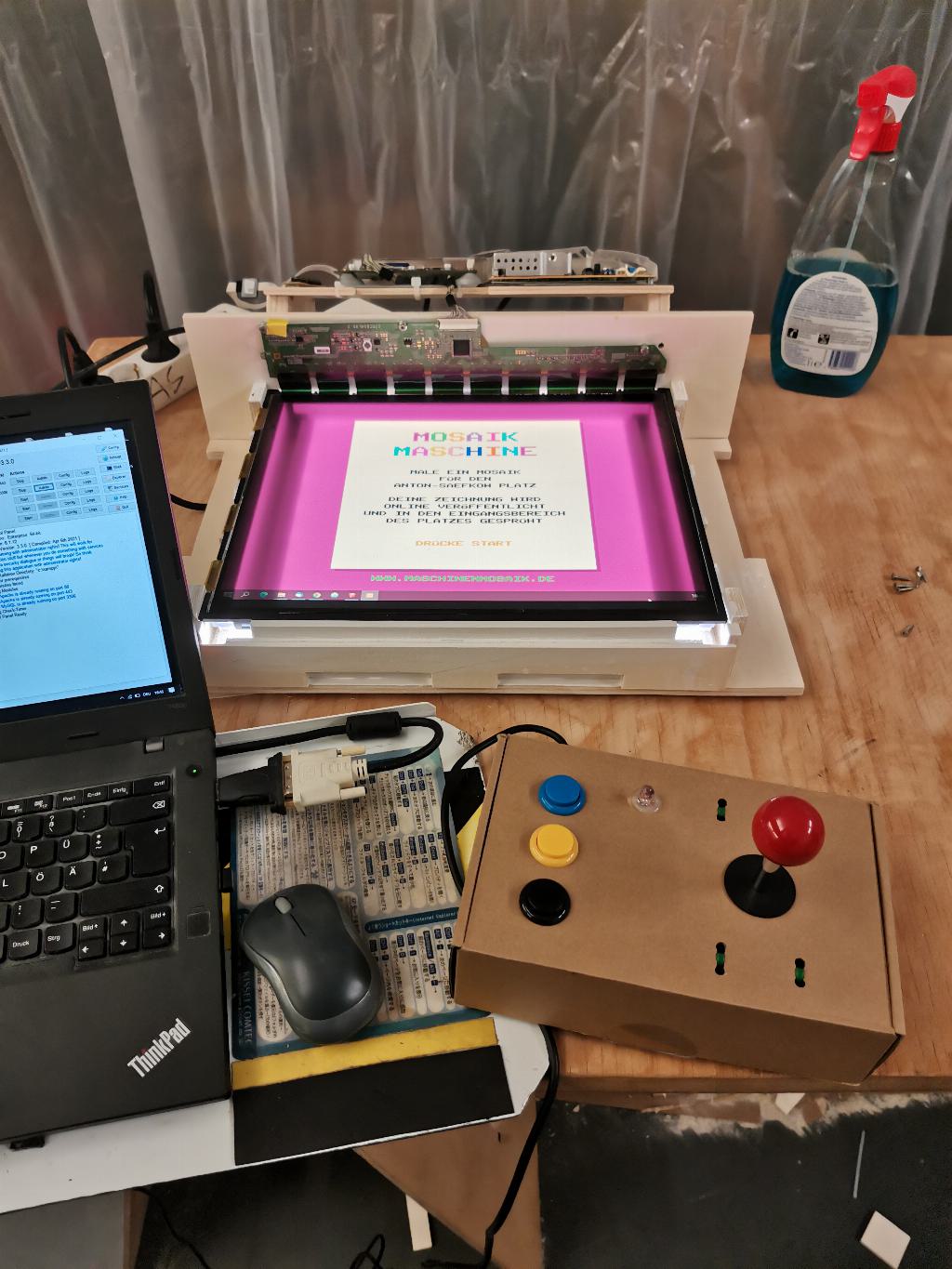
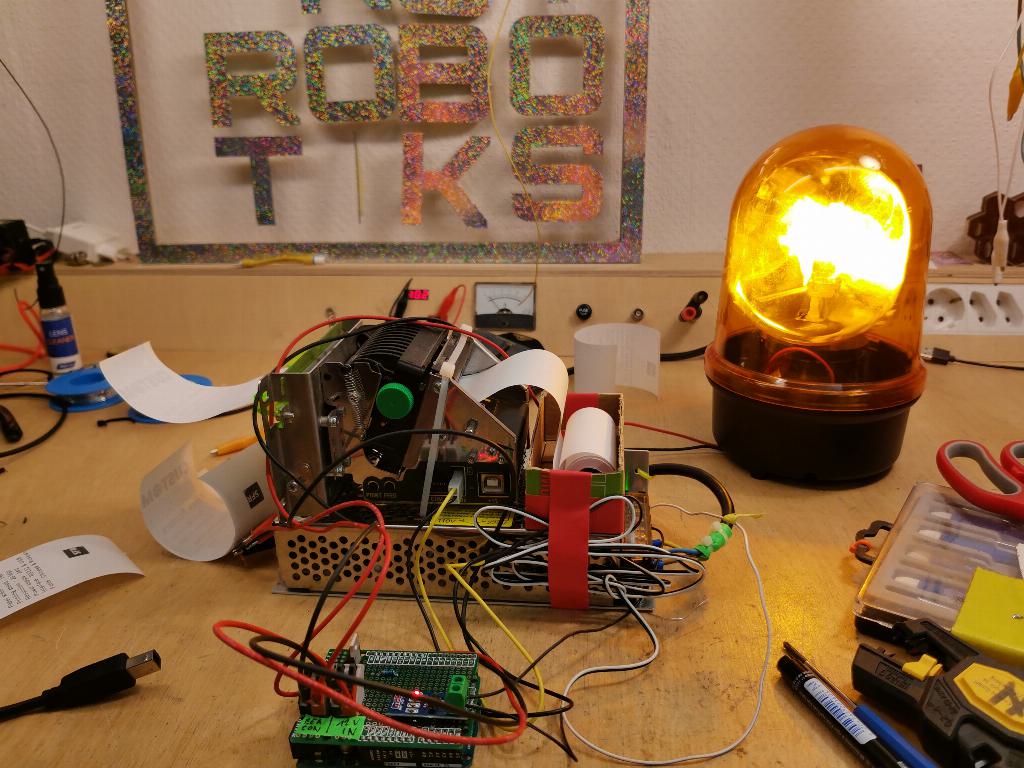
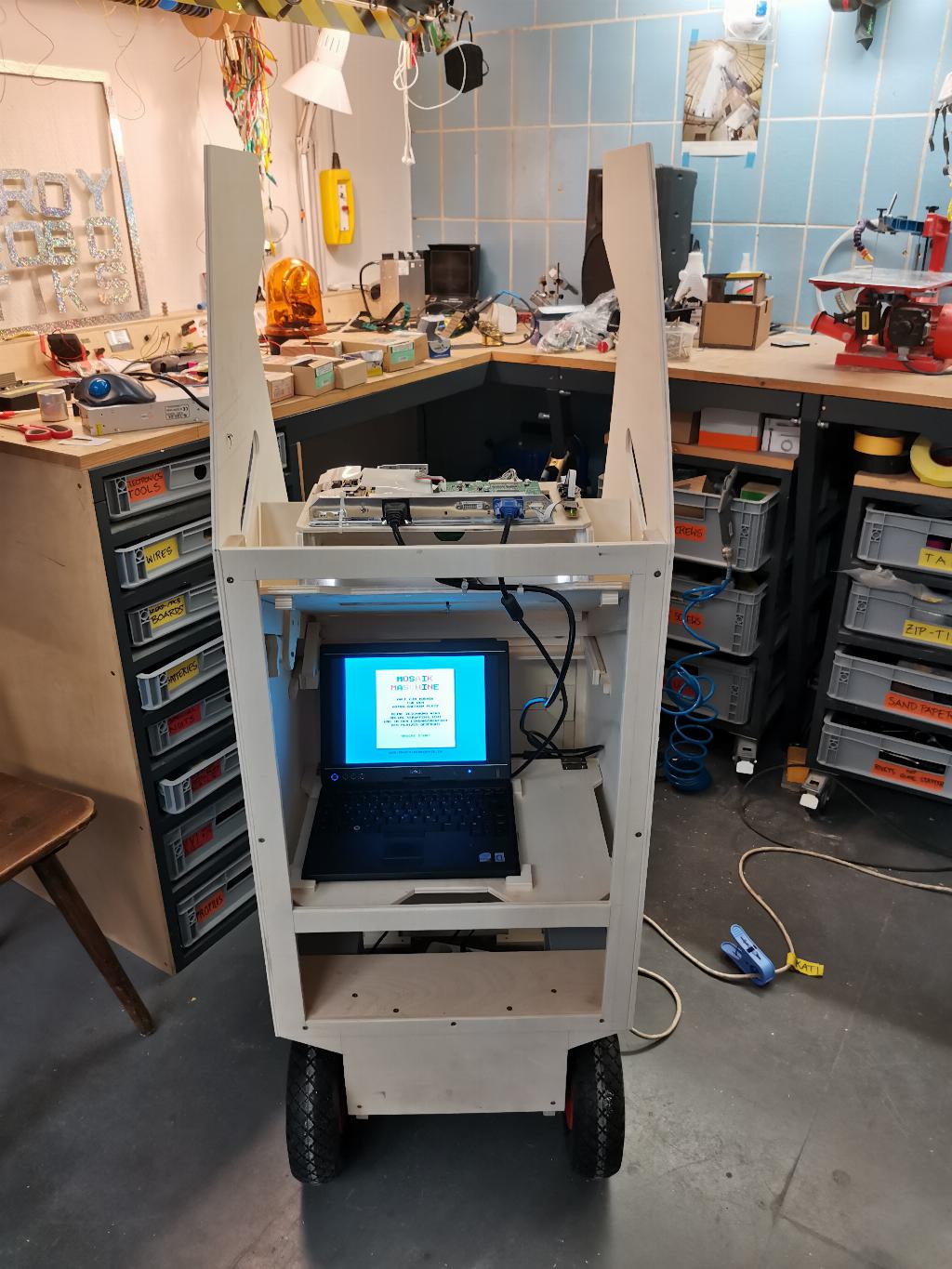
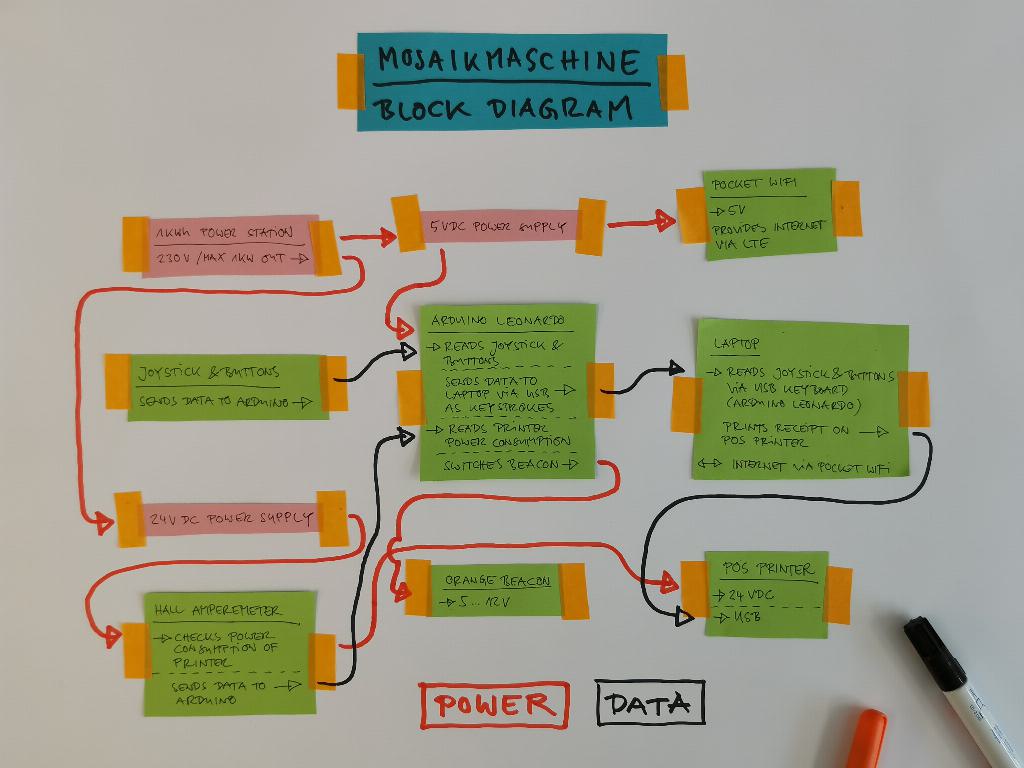
The software running on the machine is a drawing program which I programmed in Javascript. With the joystick, the users control a pencil on the screen. They can draw black and white pixels in a 32 * 32 grid. Every input is accompanied by joyful bleepy sounds, which are generated with the Web Audio API. Once the drawing is finished, it is sent to the project website maschinenmosaik.de, where a PHP script saves it in a JSON file and makes it right away accessible in an online archive. At the same time, the mosaic drawing is printed on receipt paper as a memory and as a proof of participation. The receipt also includes the archive URL and an index number, so that contributors can easily find and download a digital copy of their design. While printing, the machine lights up the orange beacon, hopefully attracting new participants. This feature turned out to work quite well!
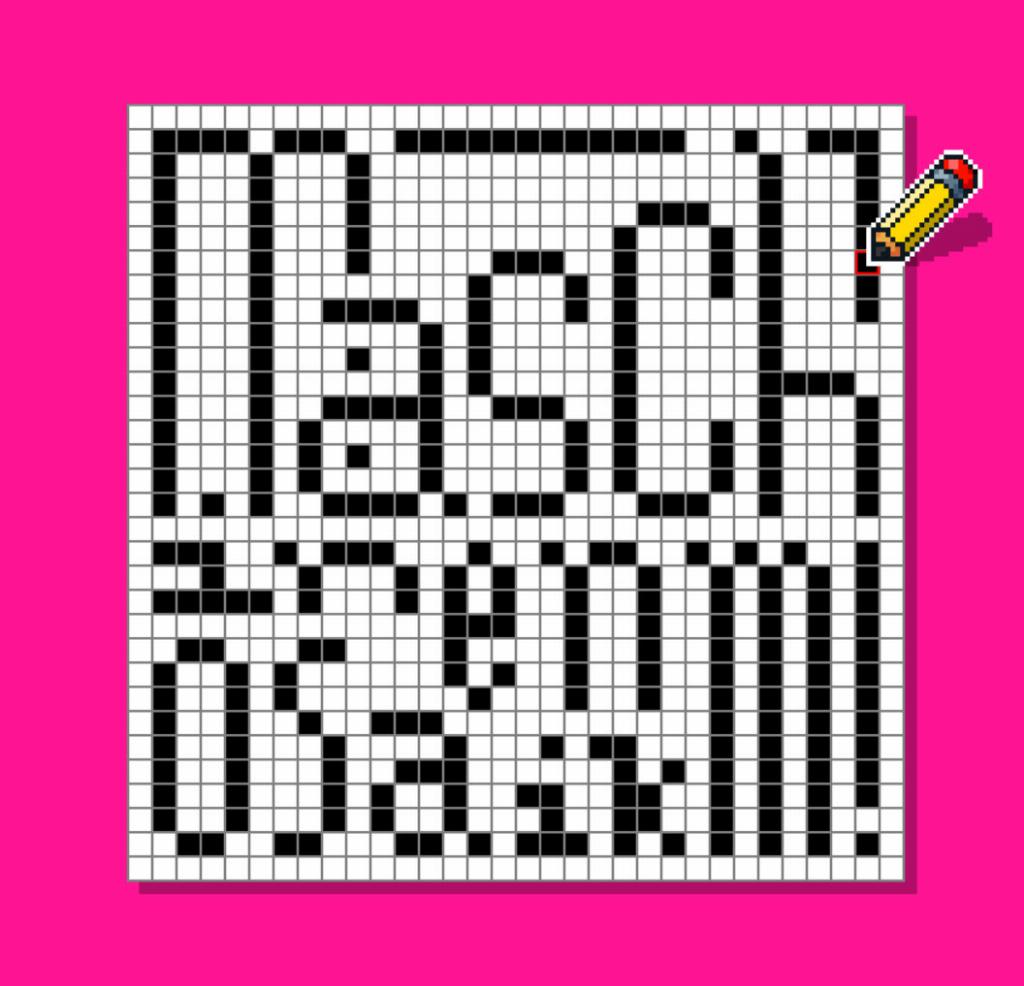
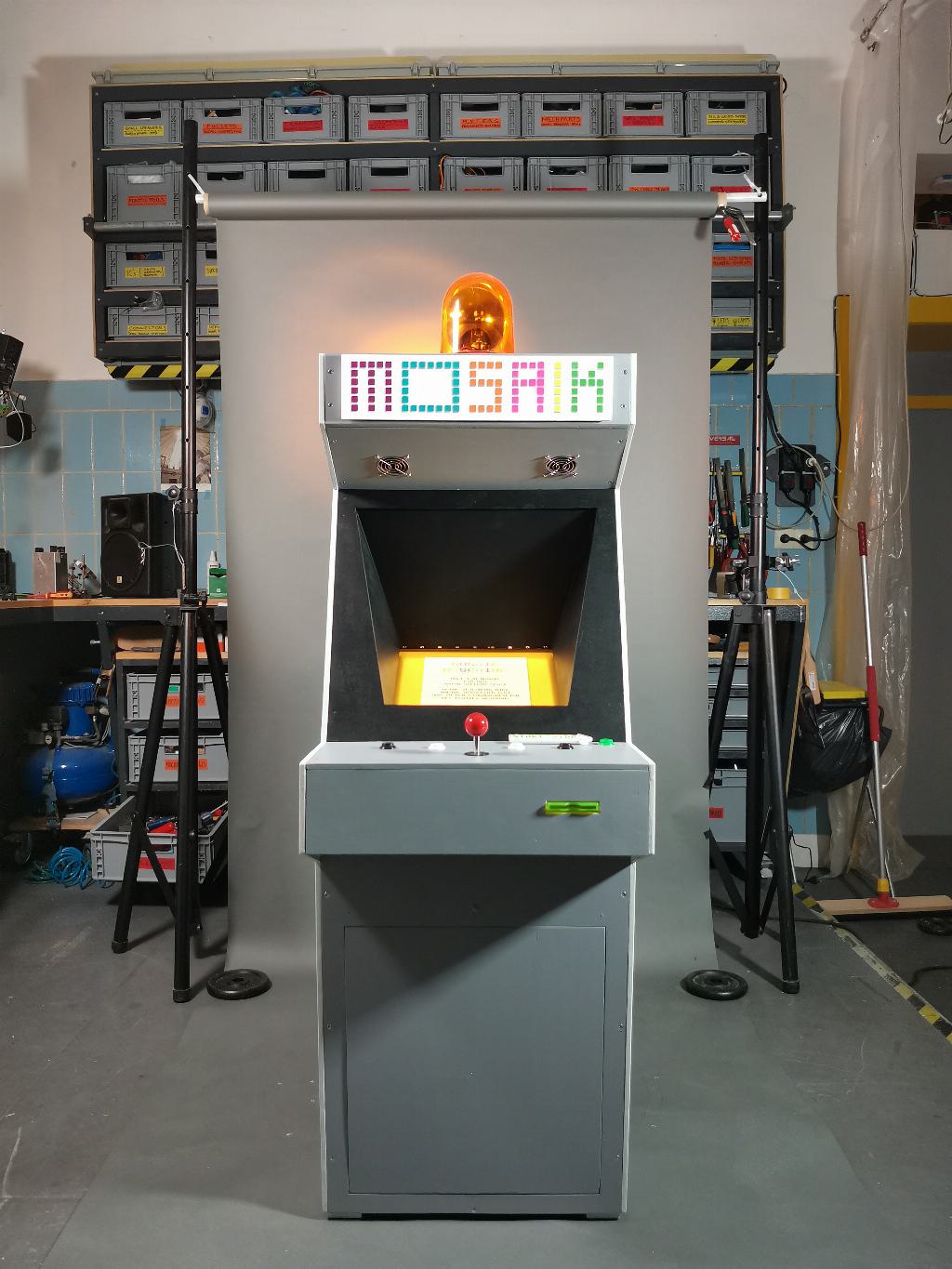
Collecting mosaic designs
When the mobile arcade machine was up and running, my friend Paul, aka d-b3, joined me in taking it around the neighborhood. Over the course of two months, we visited various locations, including the city hall, a youth club, the public library, and an inclusive disco. We also took the Mosaikmaschine to the public swimming pool, a fast food joint and many other places around Anton‑Saefkow‑Platz. Once the weather became warmer, we regularly brought the arcade machine to Fennpfuhl park where it usually attracted a little crowd.
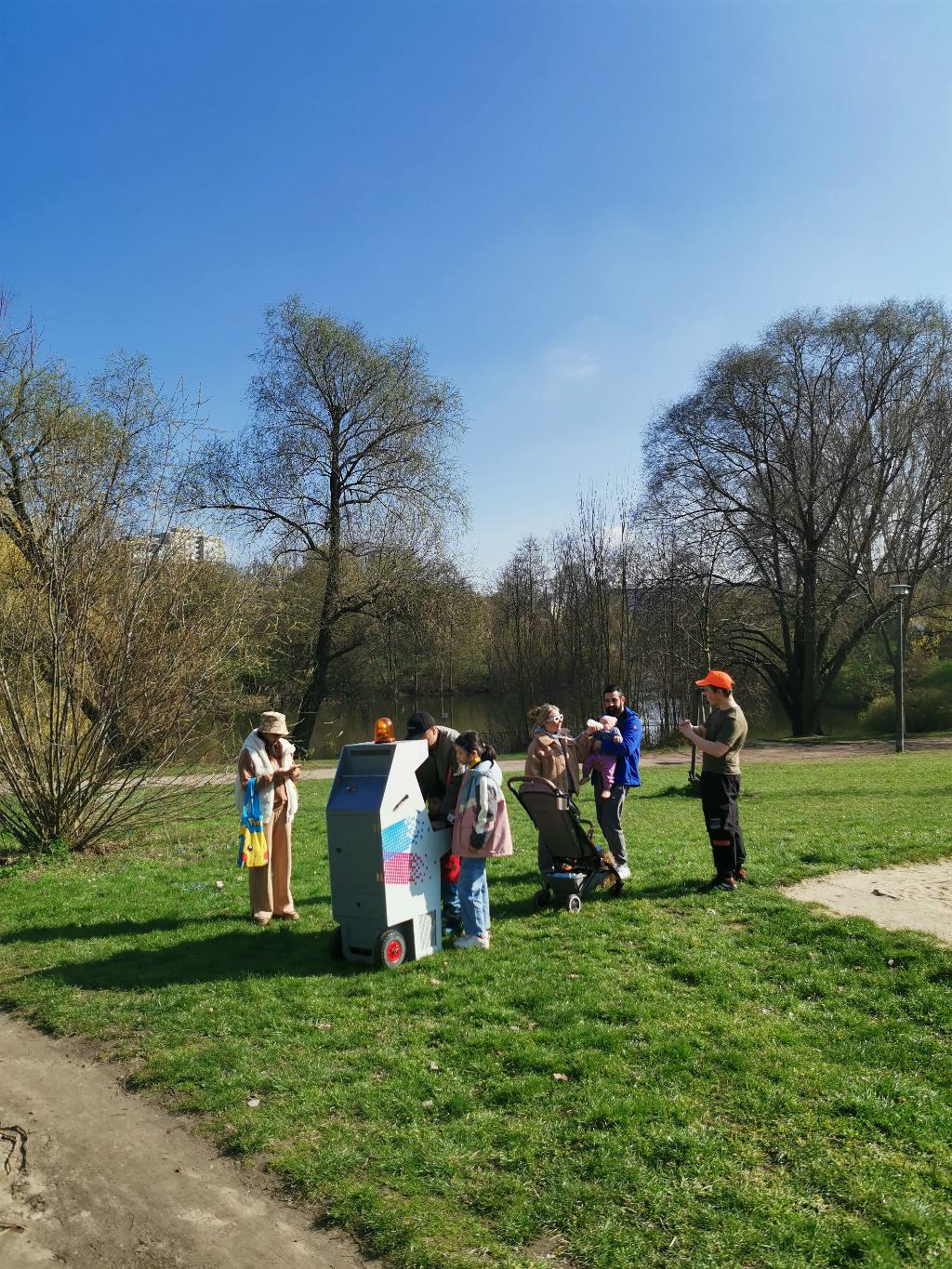
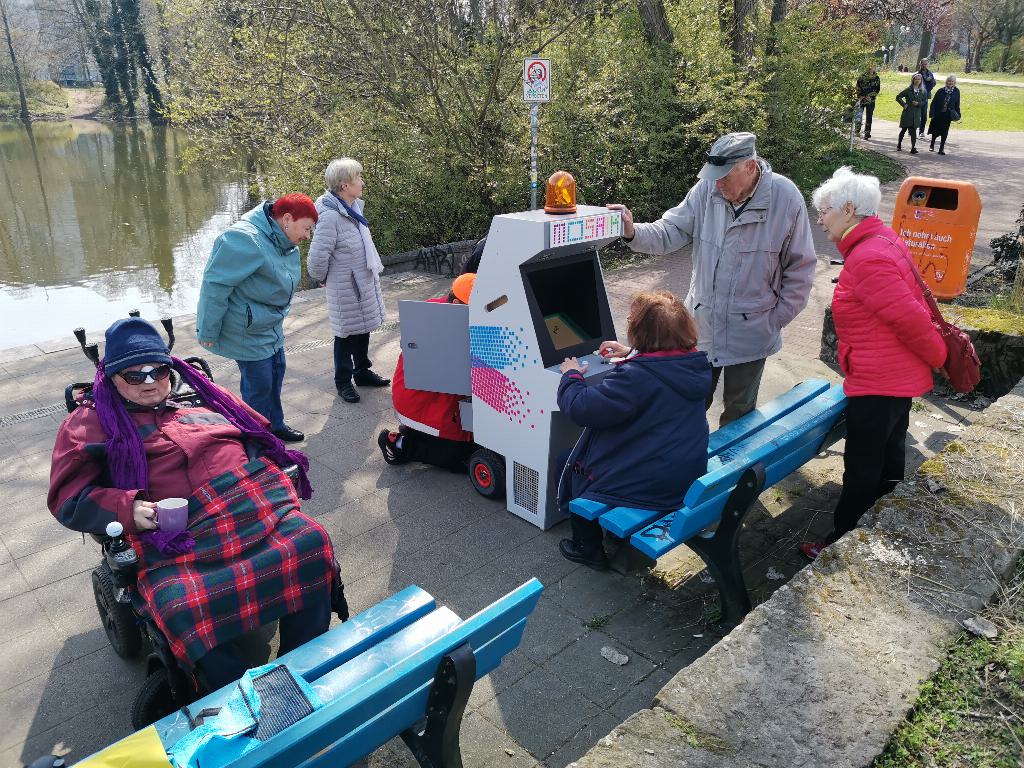
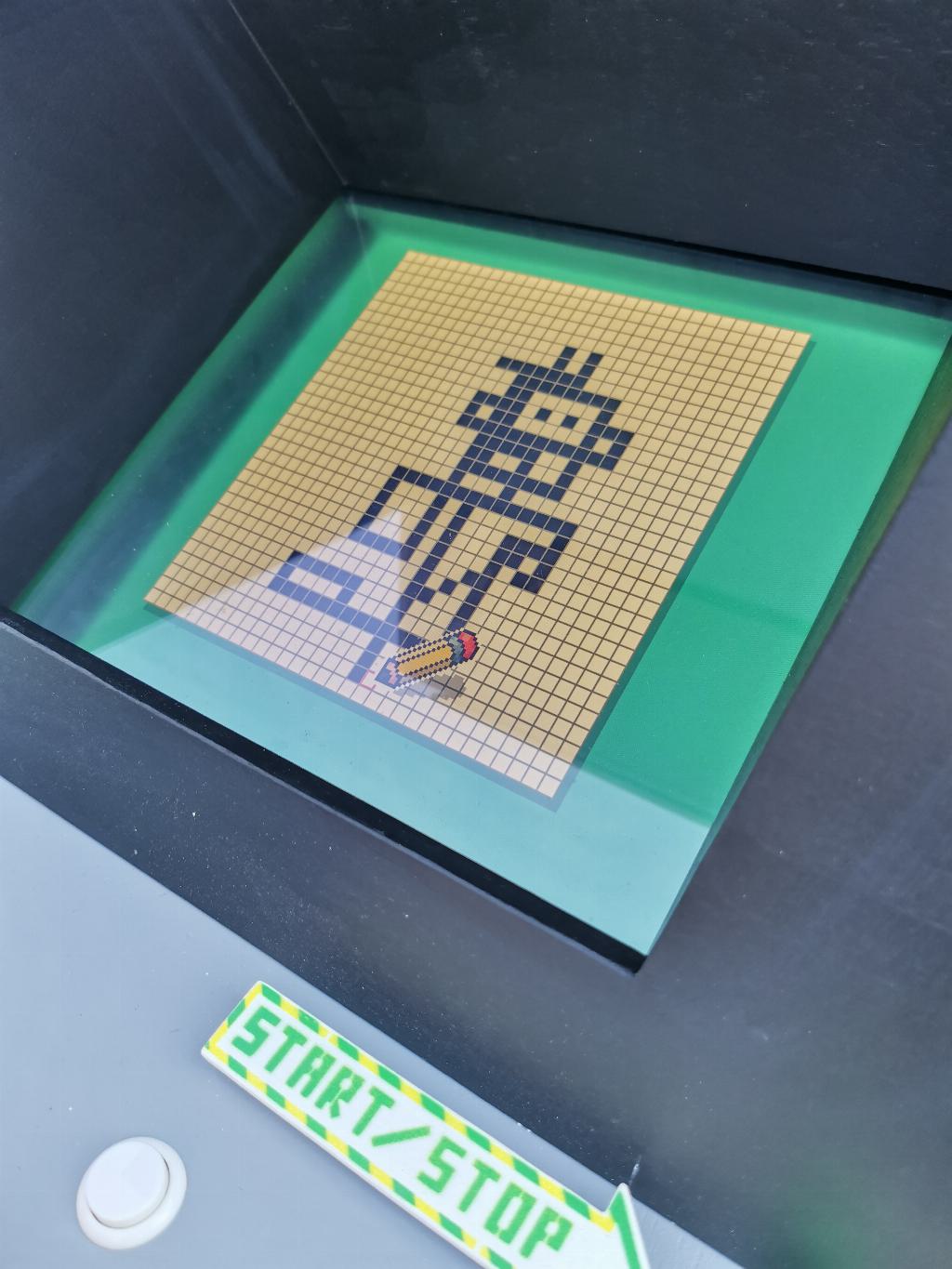
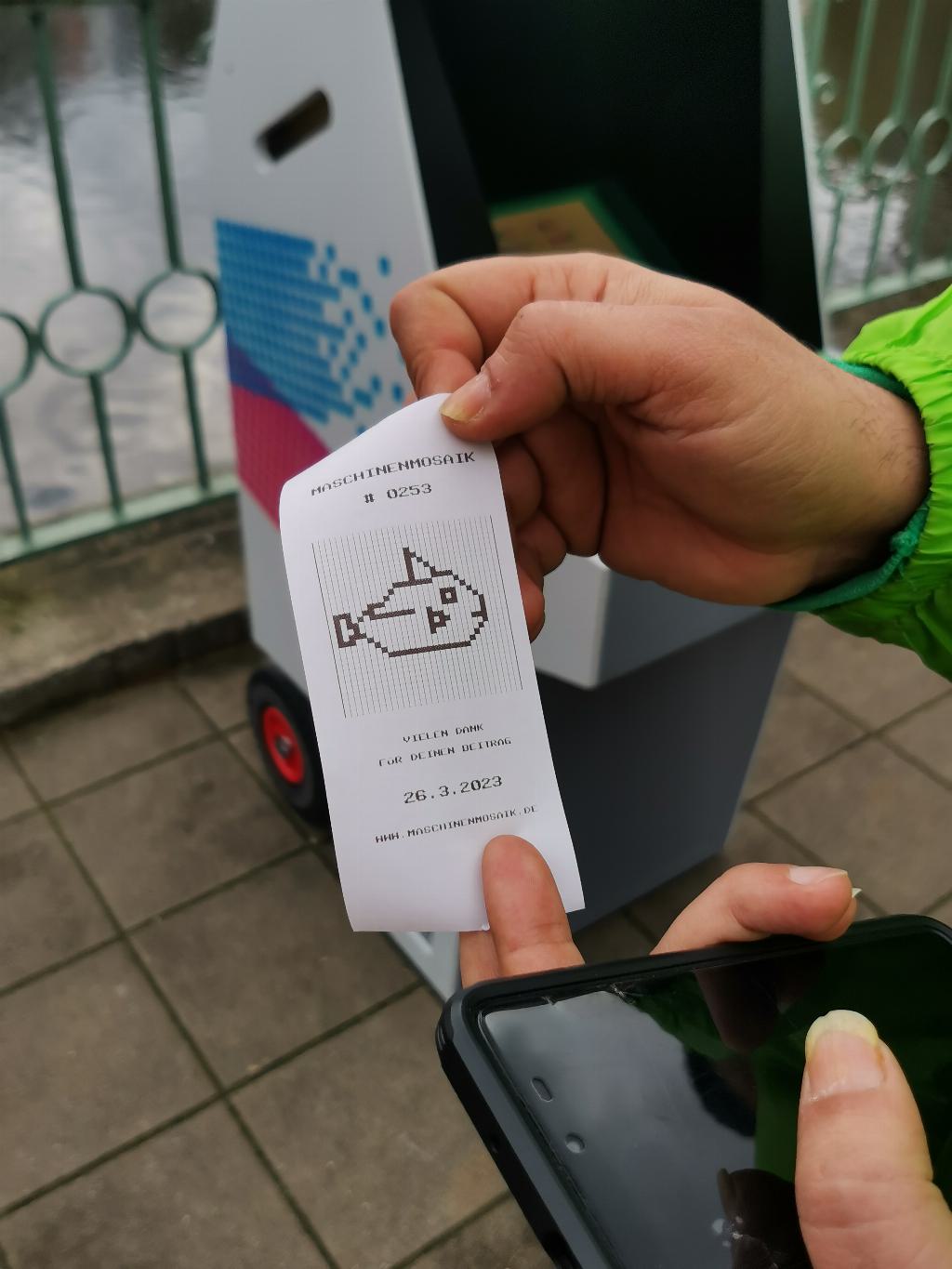
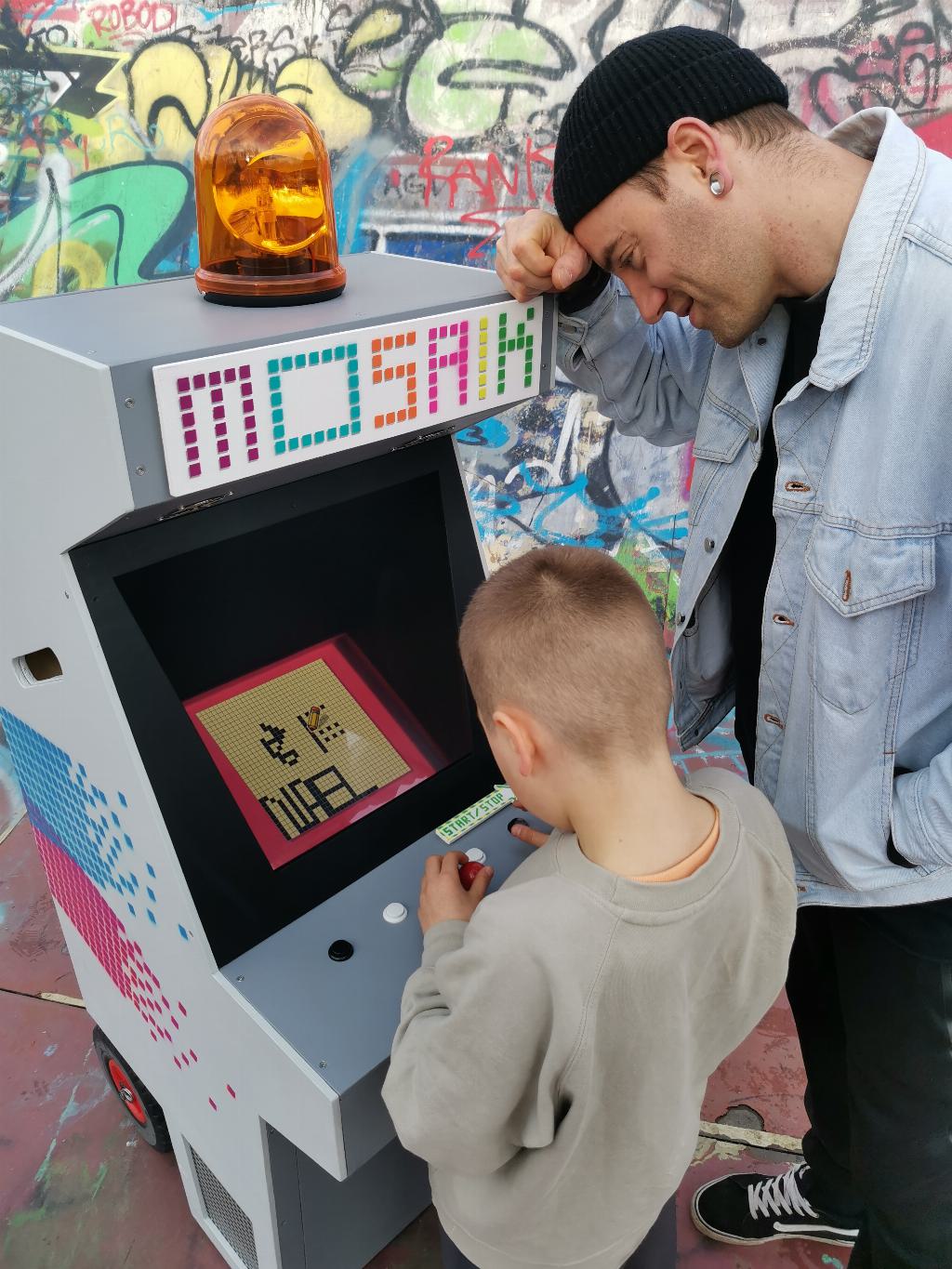
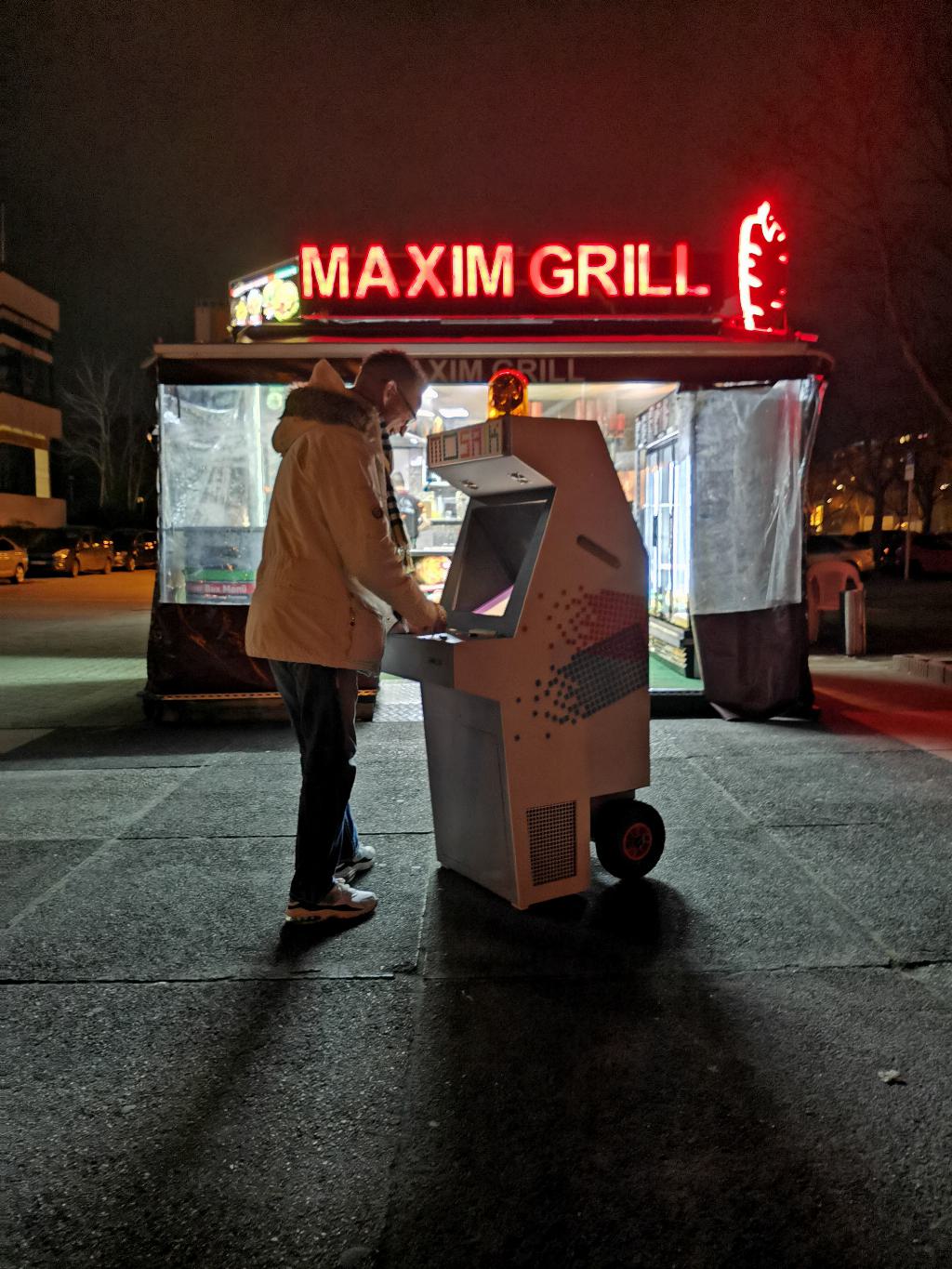
Our district also owns a mobile tiny house, designed by Van Bo Le‑Mentzel. He brought it over to Anton-Saefkow Platz, where we turned it into a “Mosaik-Amusement-Arcade”. We opened the house regularly to the public. On one of those days, Dieter Rühle, main architect of the square paid us a visit and drew a mosaic design, too.
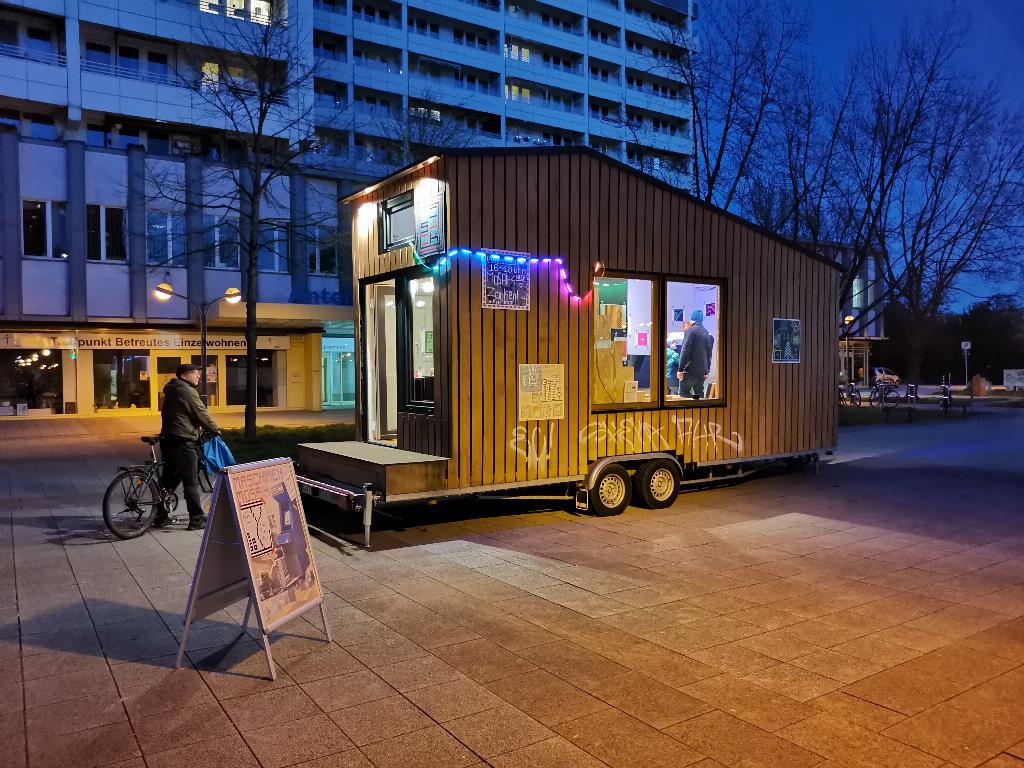
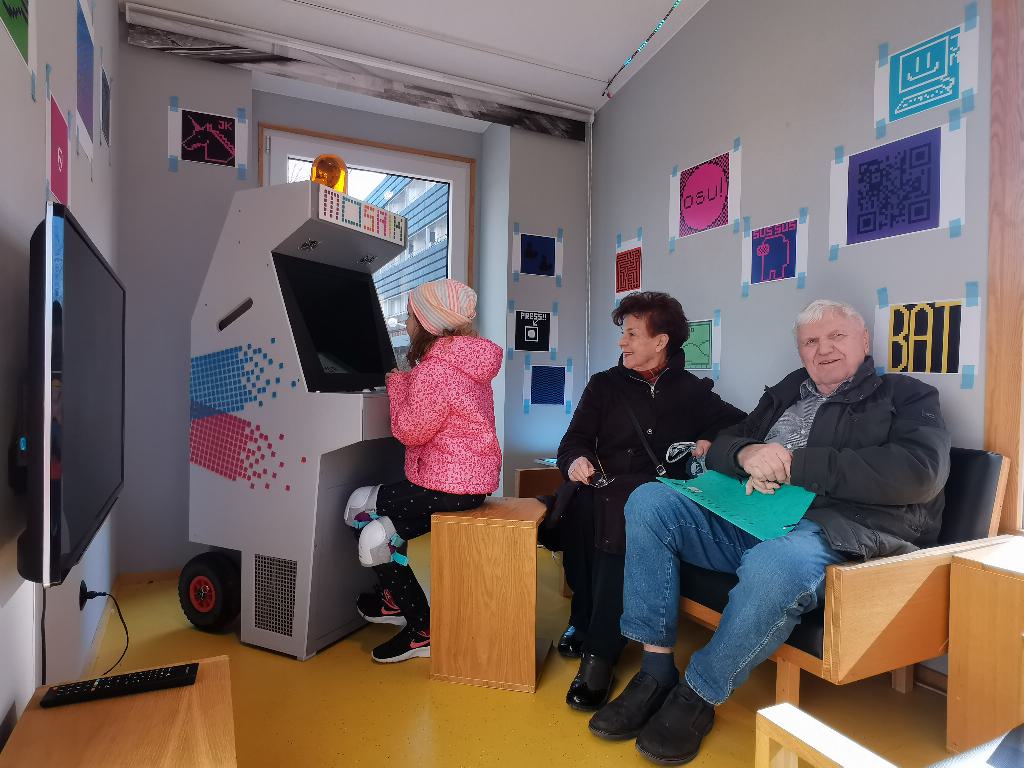
The machine had an undeniable appeal. Its simple interface made it easy to use, and the neighbors contributed over 500 drawings. The participants spanned a wide range of ages and backgrounds. Their diversity was well reflected in the great variation of the motifs and the overall response was very positive. People were proud that their mosaic design would become part of the new permanent artwork.
Cutting hundreds of stencils
When the motifs were collected, we turned them into stencils with a Silhouette Cameo Pro cutting plotter. I programmed an online tool to convert the pixel motifs to SVG files, followed by cutting tests with various stencil materials. All things considered, cutting thick oil paper, yielded the best results. The material was easy to work with and the resulting stencils were durable, moisture resistant and reusable.
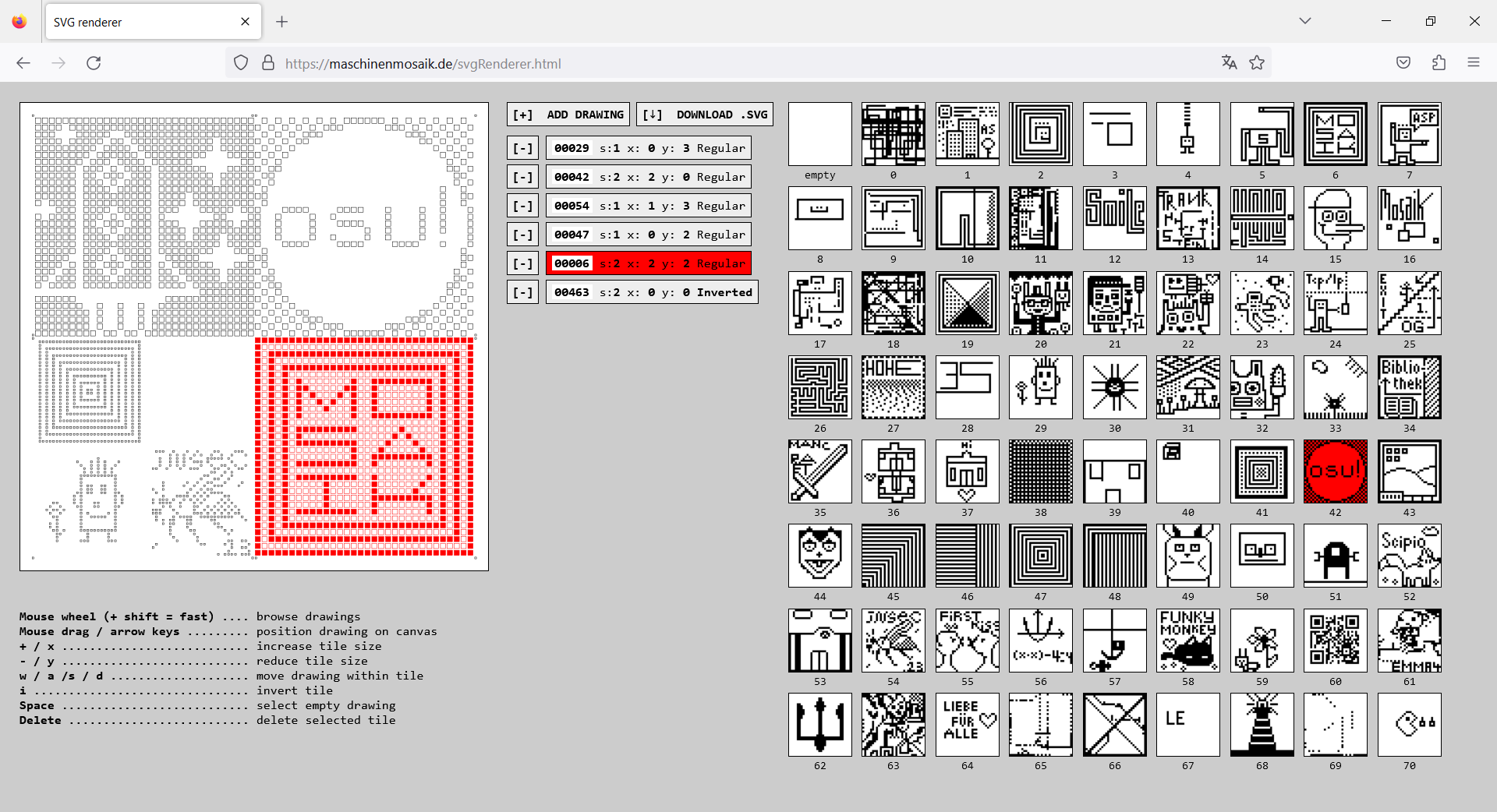
Each stencil had a size of 60cm * 60cm. The most basic ones consisted of one motif per sheet, where each black pixel of a mosaic would be cut out. The plotter could produce such a simple stencil within a couple of minutes.
However, I also integrated some layout functionality in the vector converter, as I wanted to create more sophisticated stencil designs, too. Several mosaics could be arranged on one stencil and they could also be enlarged and scaled down. The individual motifs could be inverted and placed in different positions. Some of those more intricate stencils kept the plotter running for several hours.
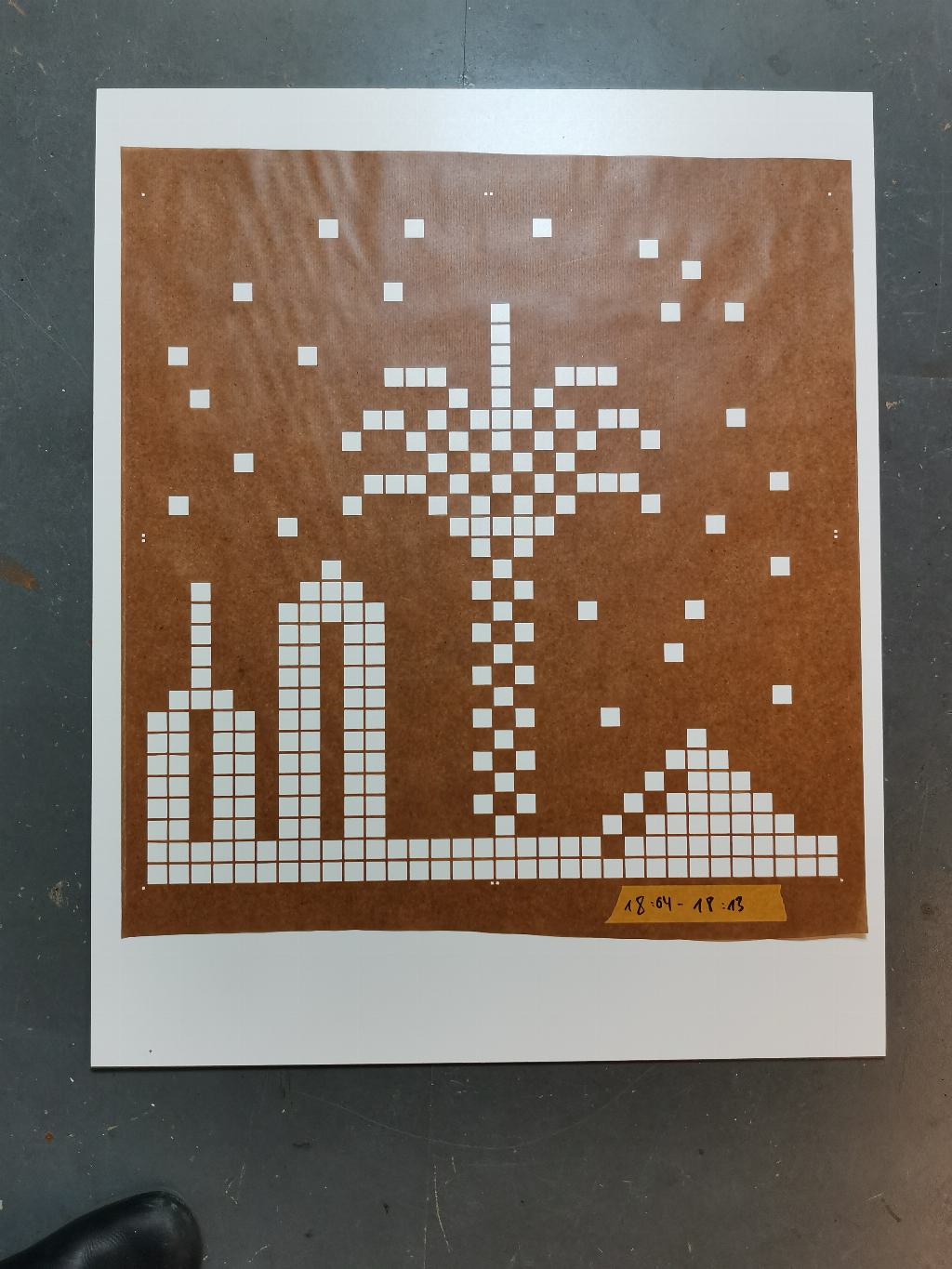
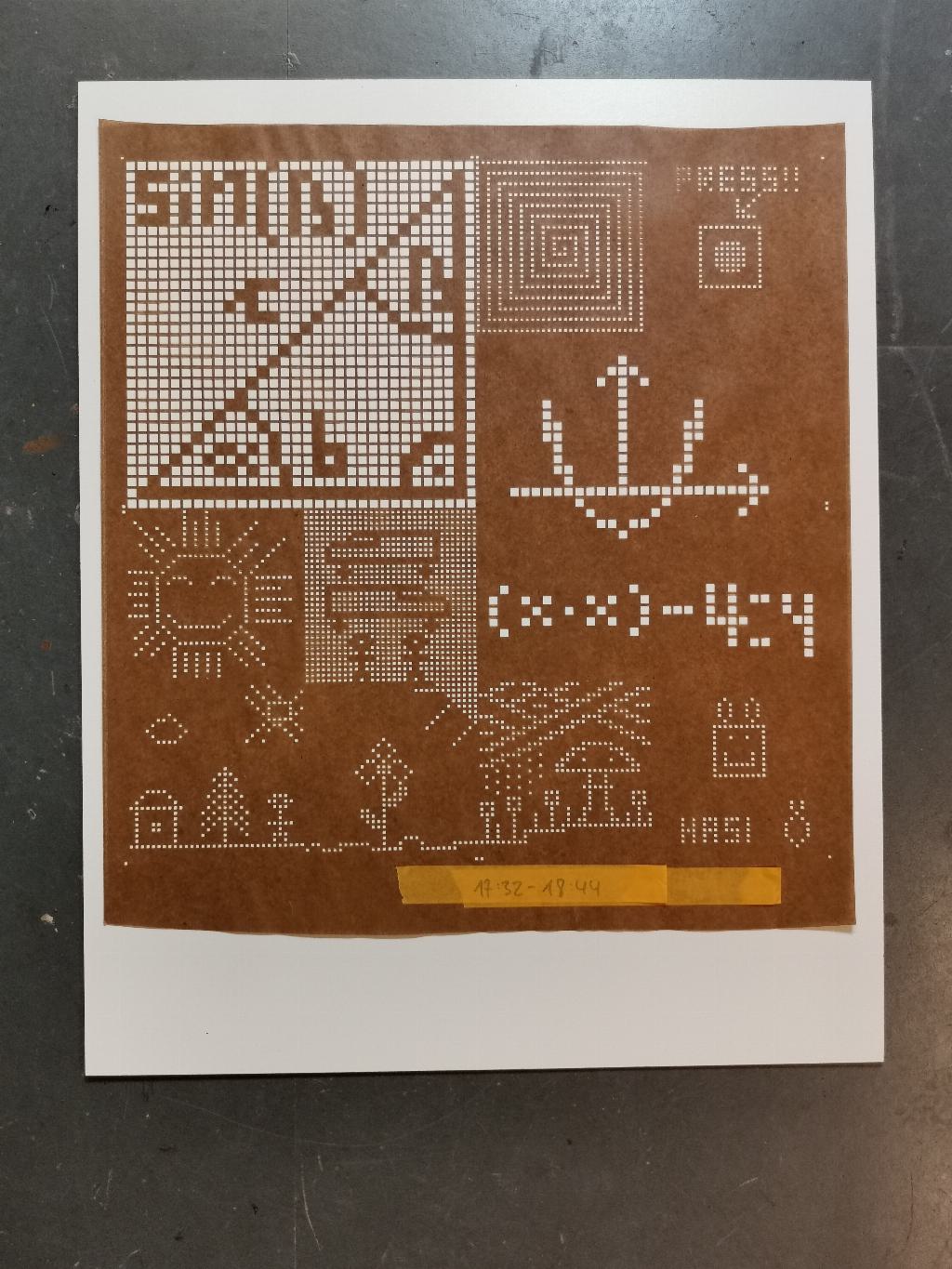
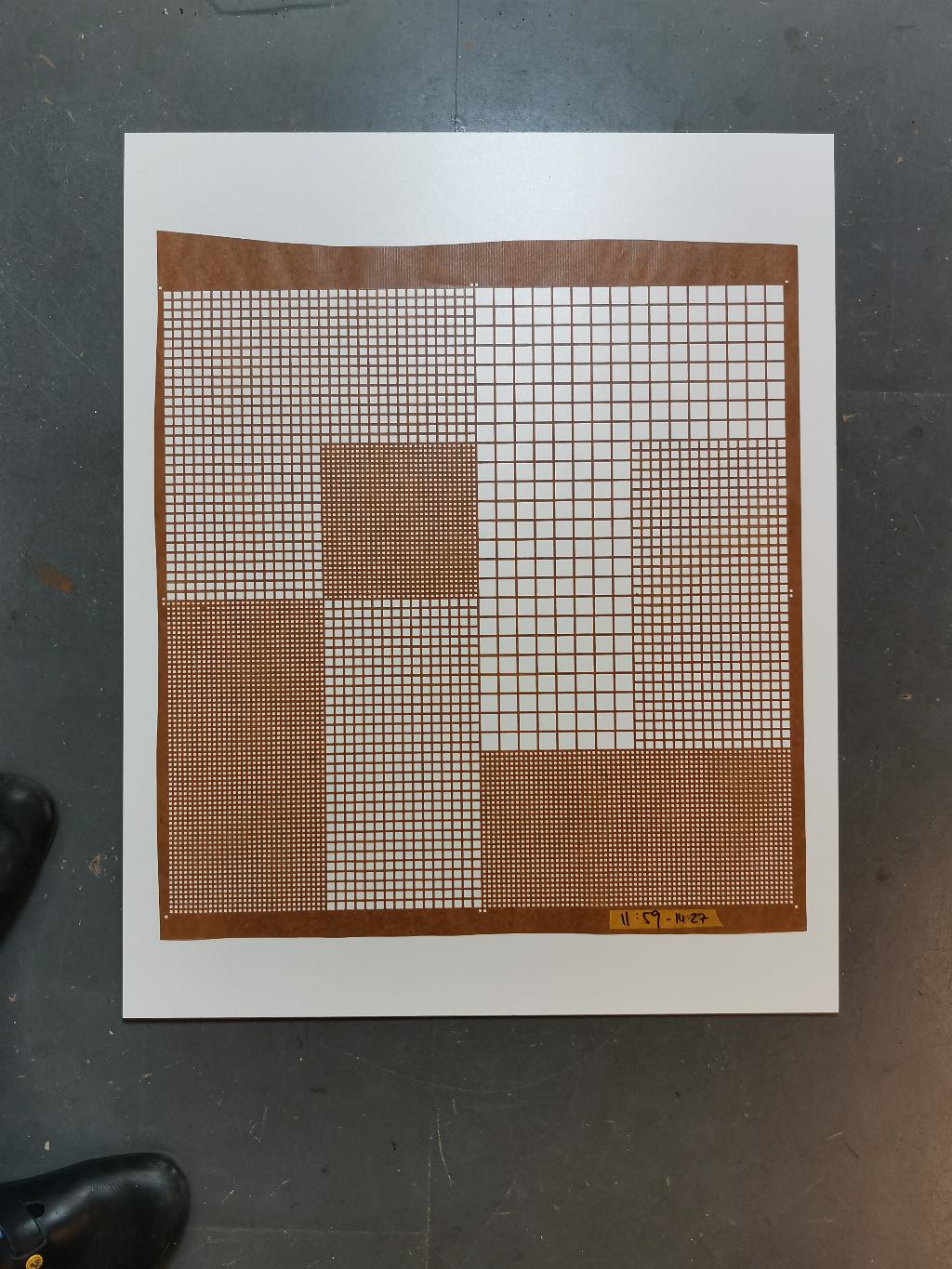
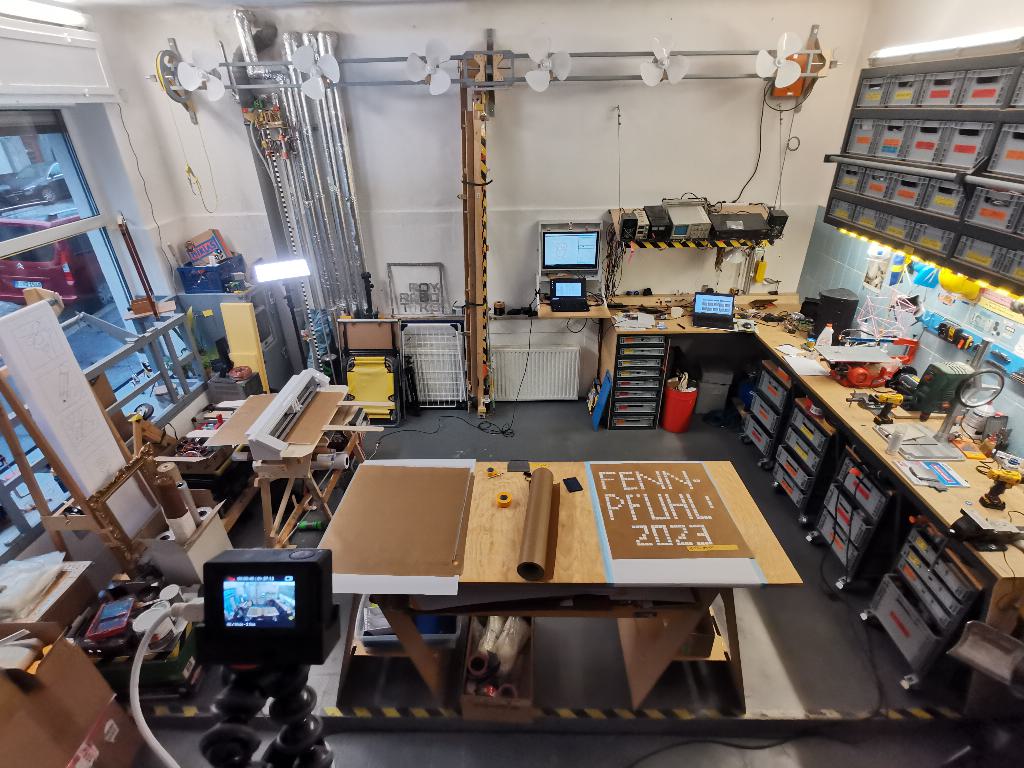
Spraying the mosaics
A couple of months into the project, the moment had come to finally use the stencils. I hired befriended graffiti and street artists Jana, Sebastian, Johanna, and Simon for the project. All of them are experts in applying paint to walls in a creative way, but working with large amounts of stencils was new to all of us. We conducted several sessions at legal graffiti walls in the neighborhood to figure out how to properly handle the stencils and to learn how to design a wall piece with them. Feeling confident after a while, we moved on to the concrete walls at Anton‑Saefkow‑Platz.
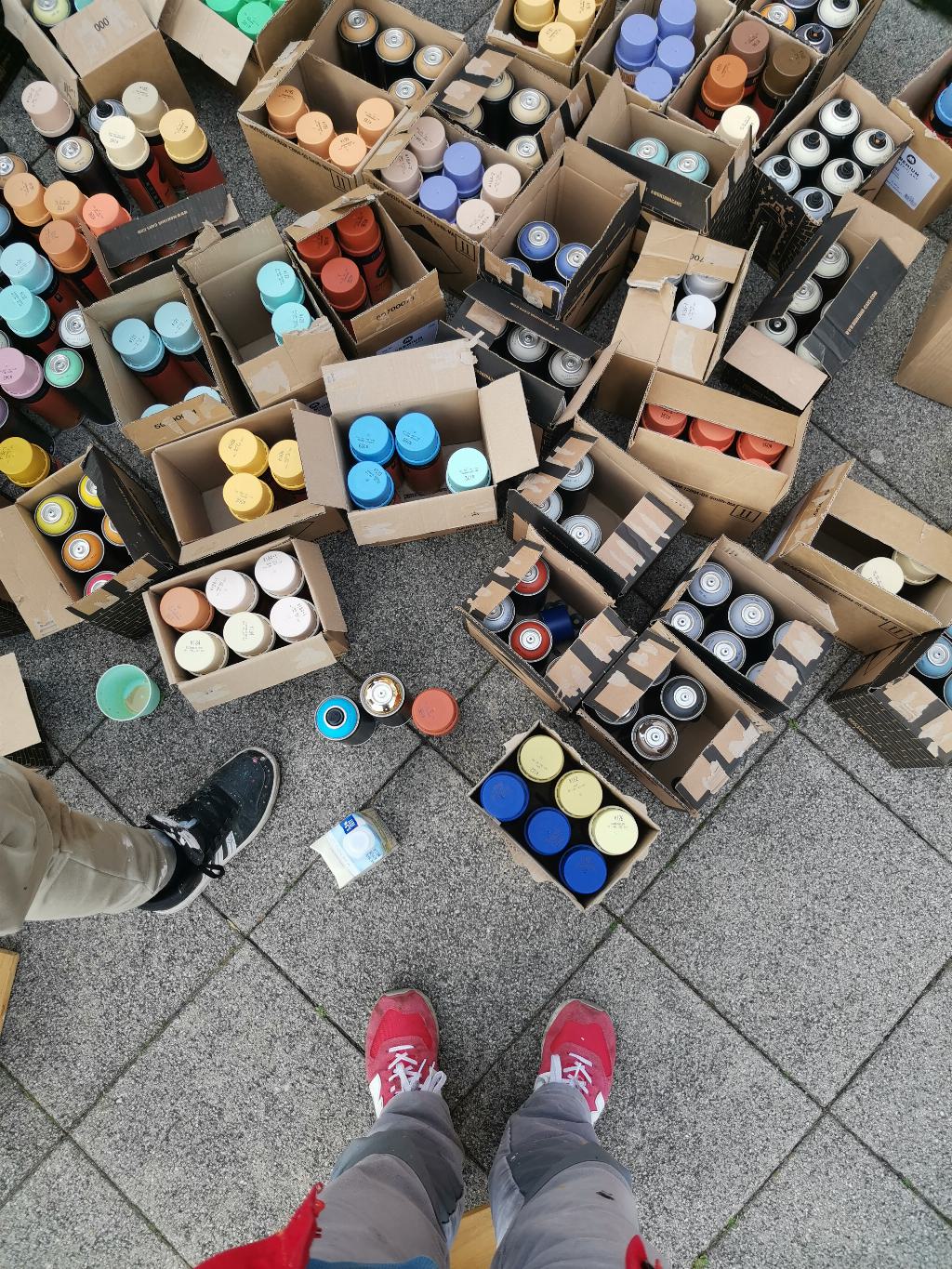
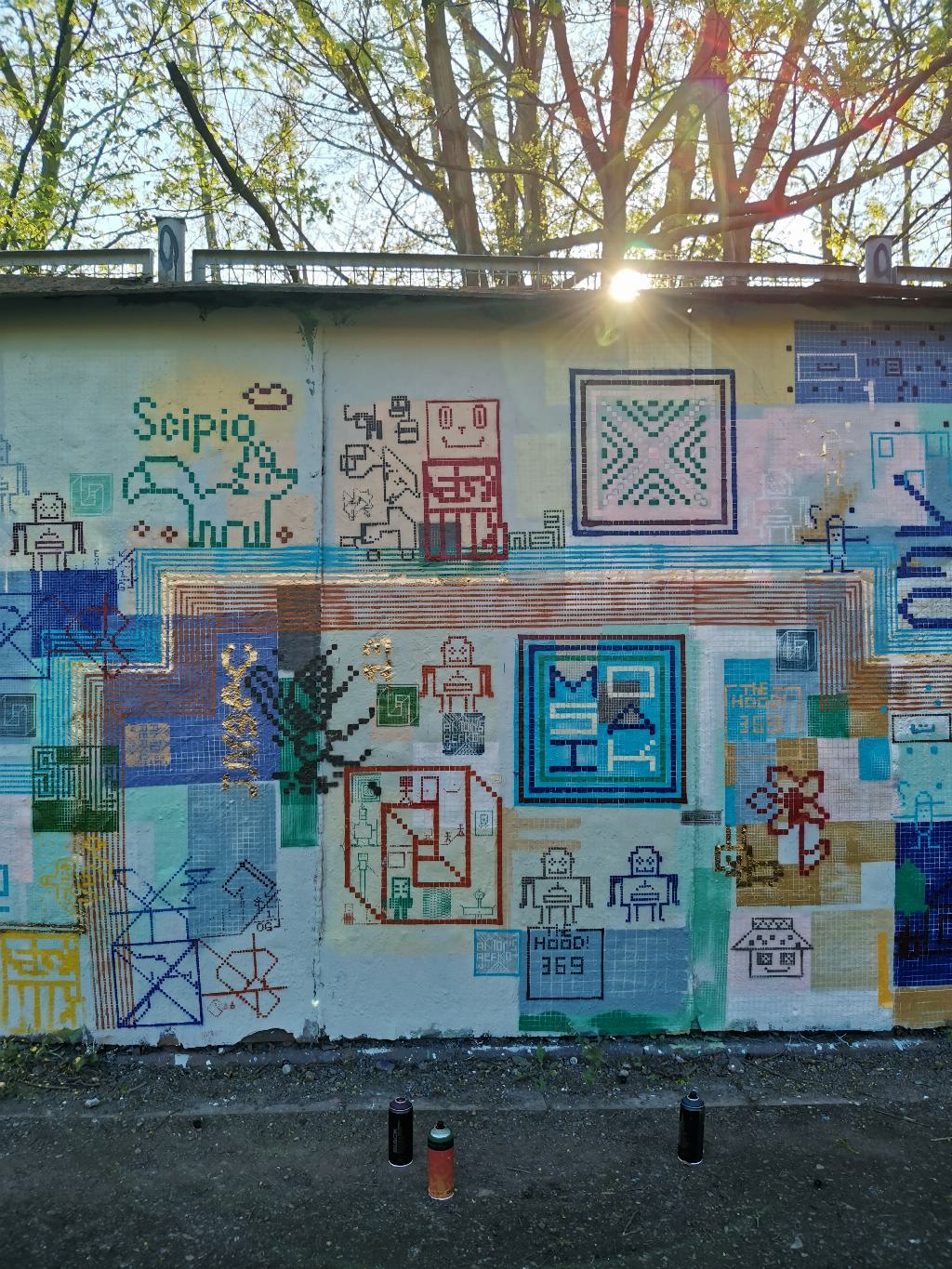
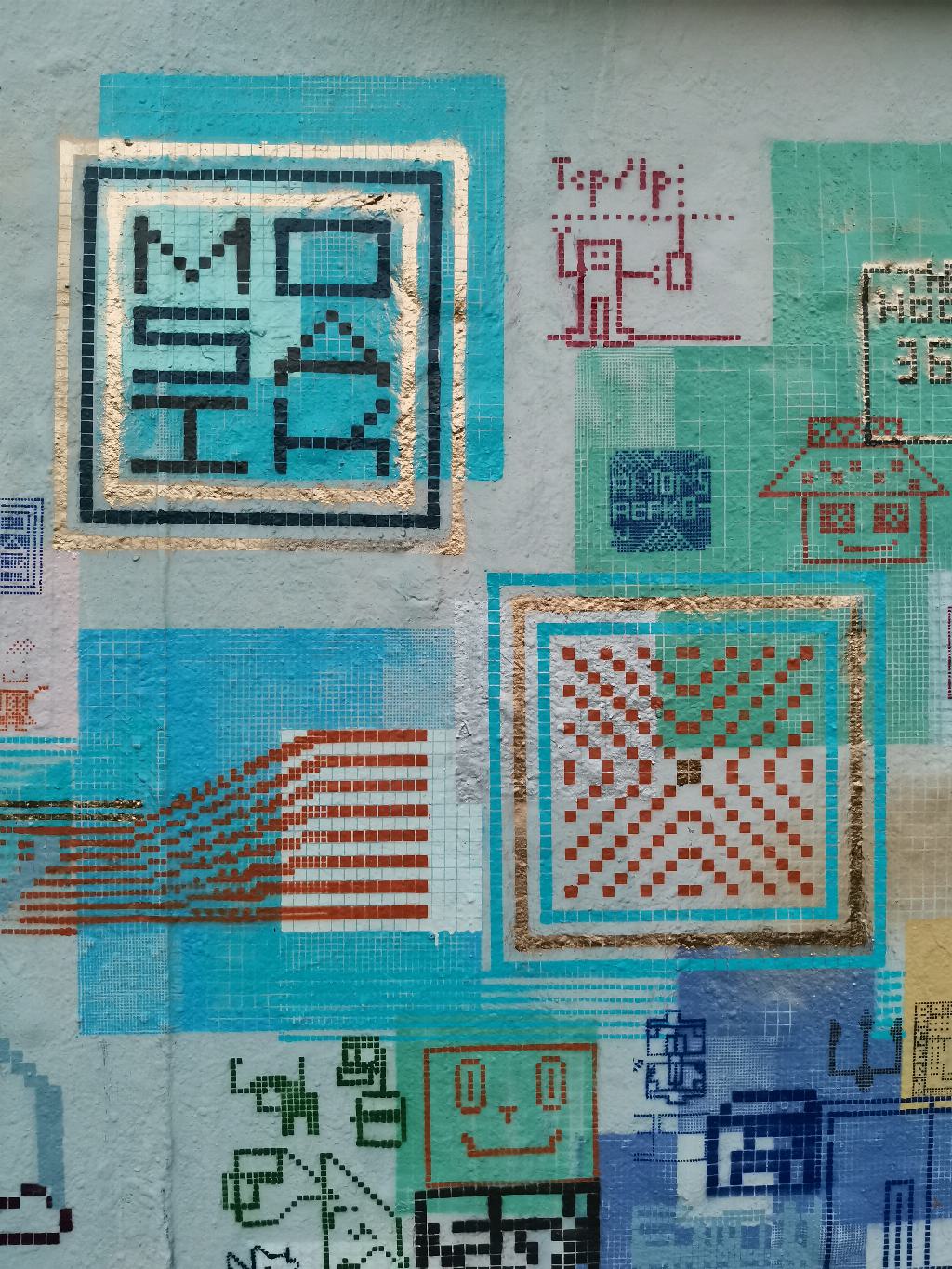
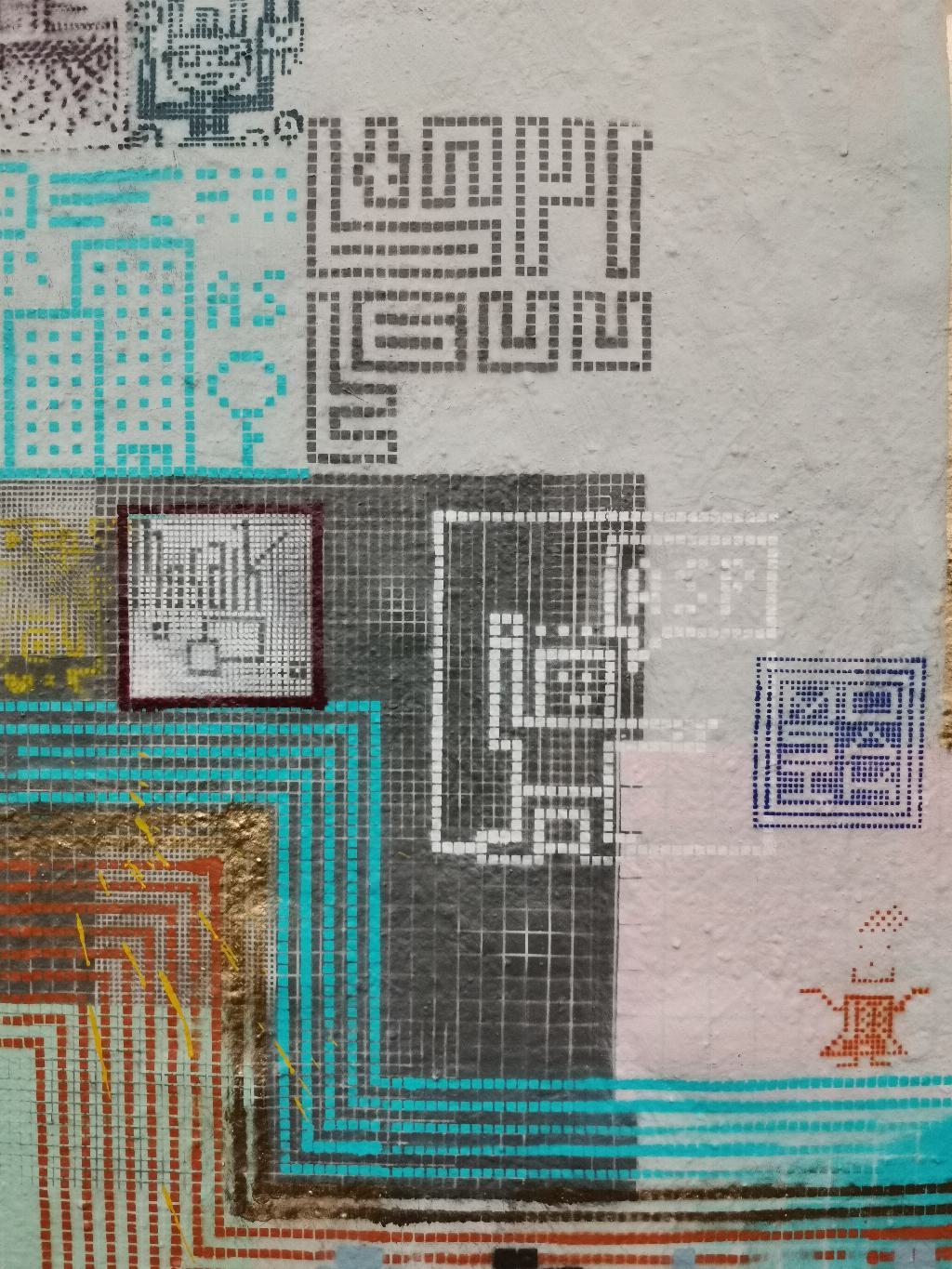
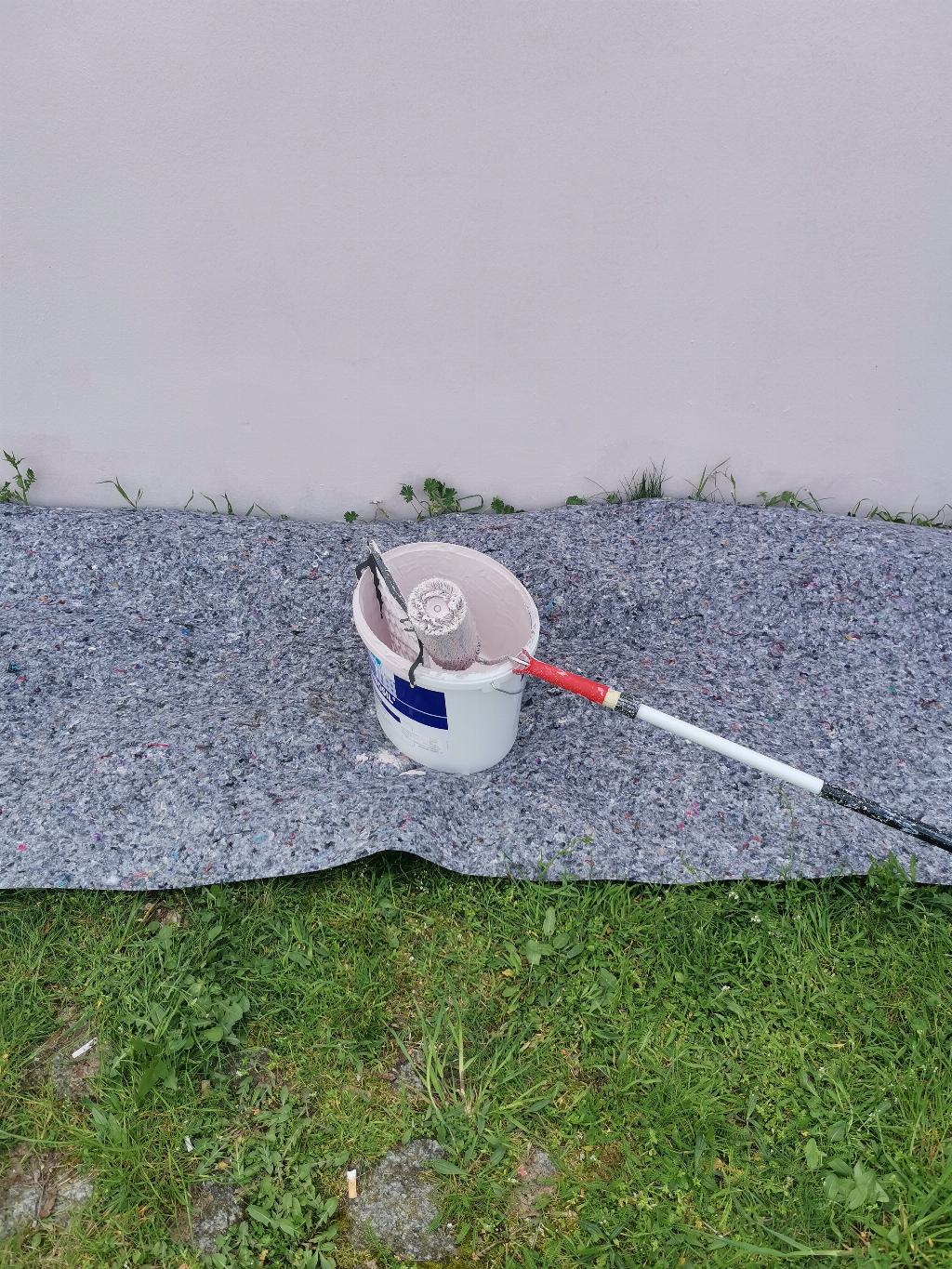
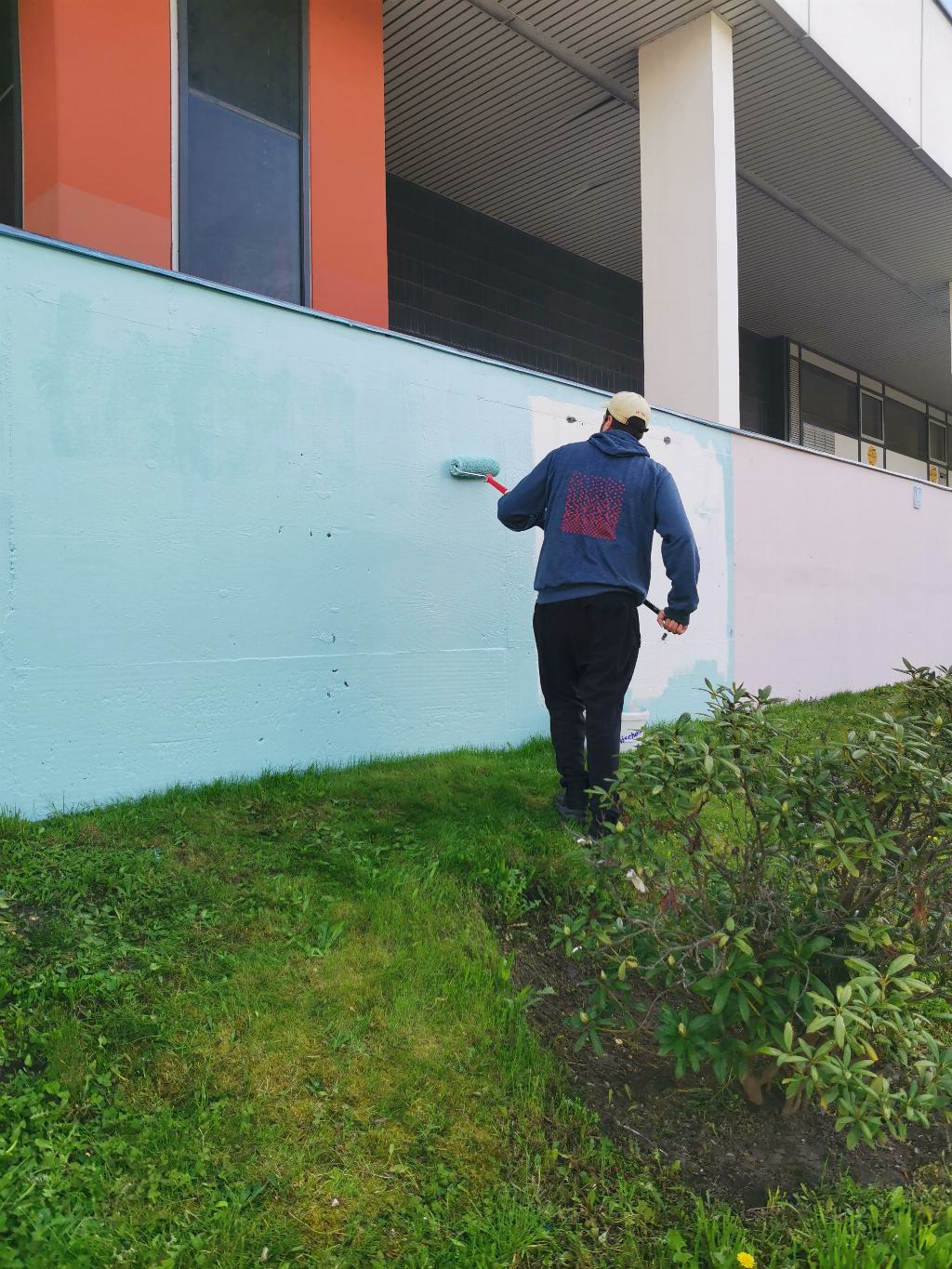
We cleaned the walls and pre-painted them. Then we sprayed empty grids as background layers. People saw that something interesting was emerging and some of them were already aware of the mobile arcade machine, as their friends or neighbors had participated in drawing with the machine. Some locals even brought us lemonade; they were obviously happy to observe our progress. The weather proved to be challenging, though. The place turned out to be very windy, which made the handling of the large stencils really annoying.
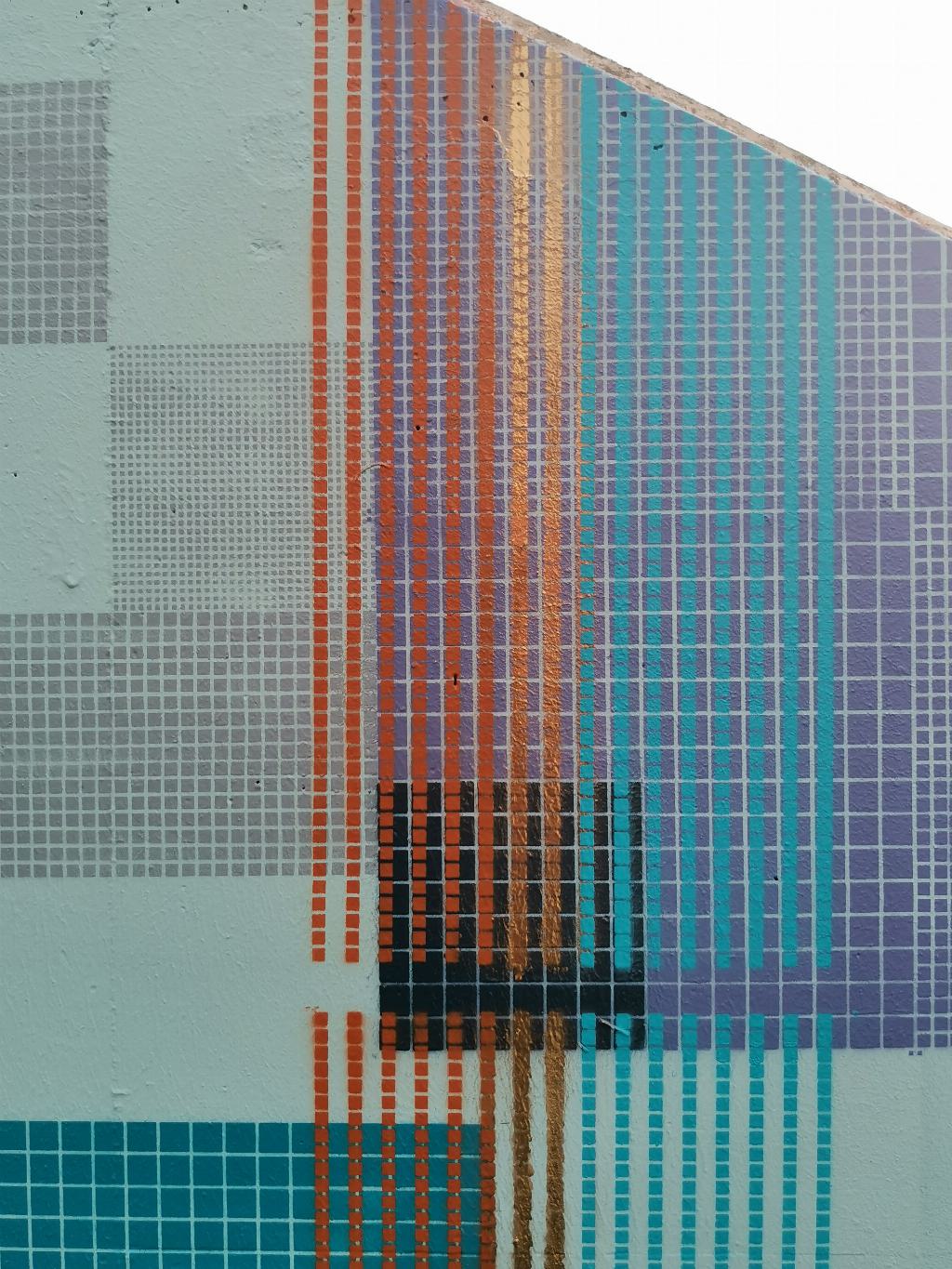
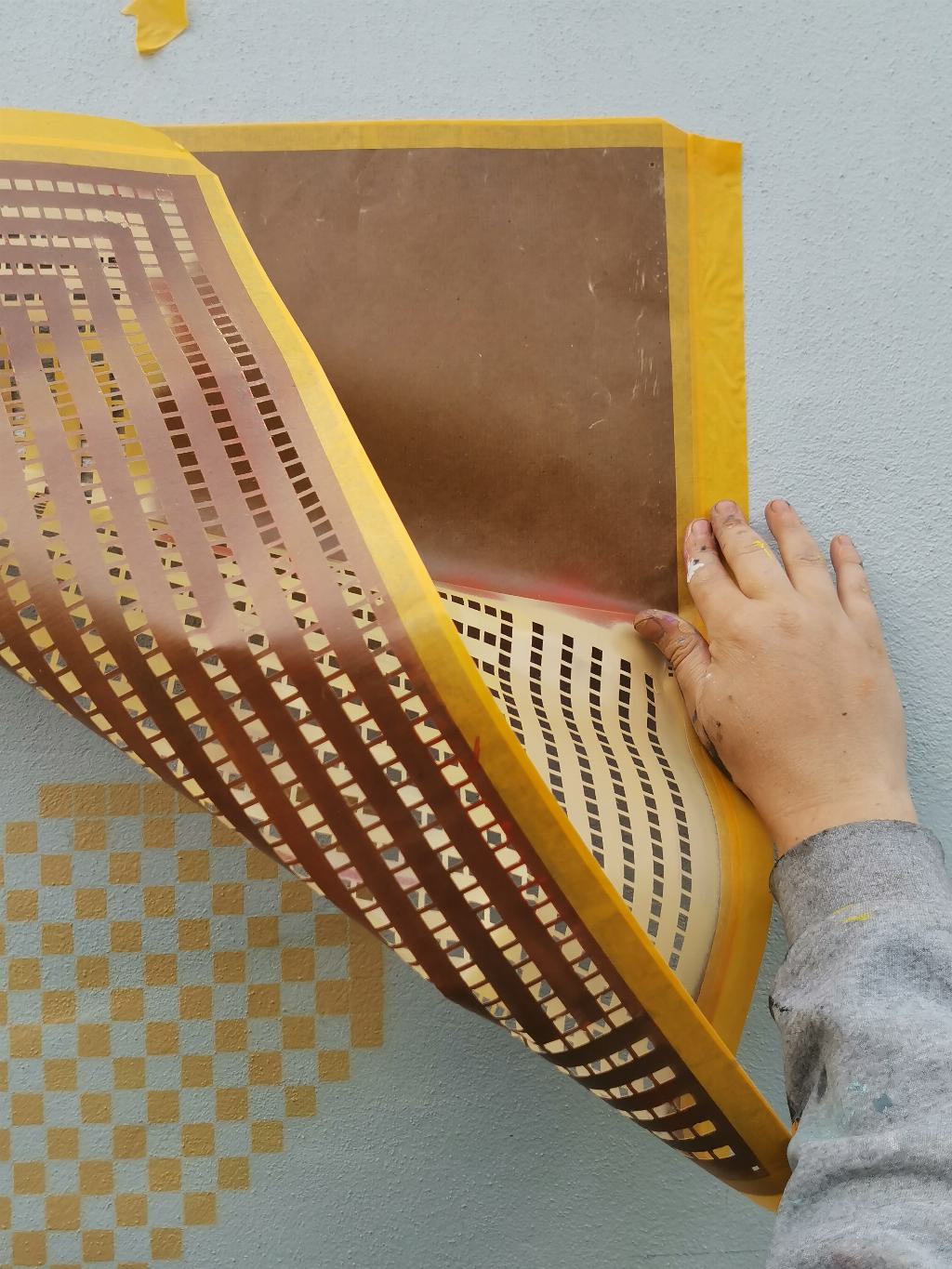
Altogether, we painted walls in four different areas around the square. We grouped the stencils by topic and gave each wall its own theme. We sprayed all the water-related designs, such as fishes, ships, a swimmer, and a lighthouse, close to the swimming pool, in blue shades. The parkside had a focus on nature with trees, flowers, and animals in warm colors. There was one special love corner, and the largest wall, facing a parking lot, featured a drawing of the Mosaikmaschine itself, with mosaics flying out of it. Behind the huge machine, we sprayed all the mosaics which contained names of the participants.
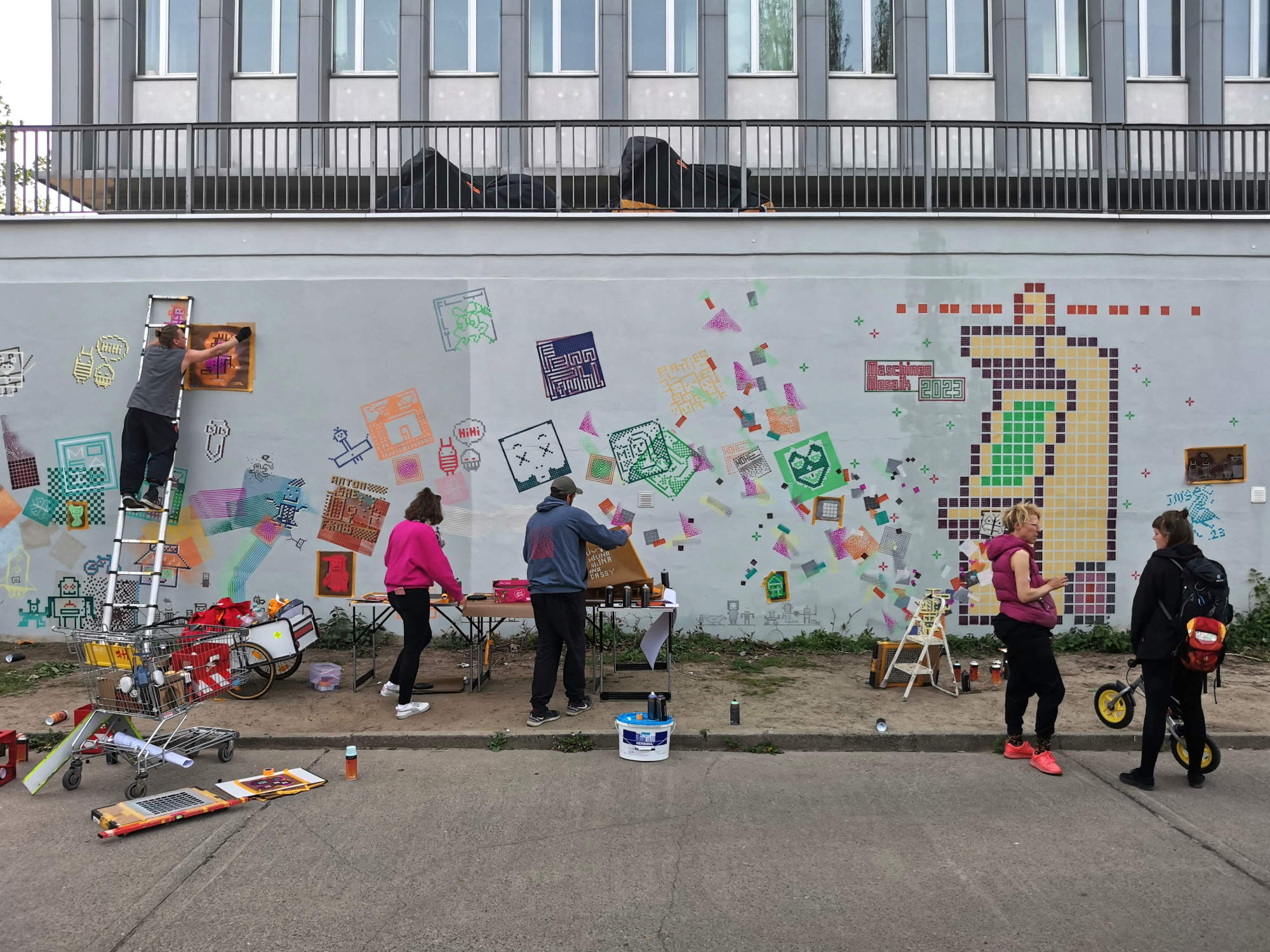
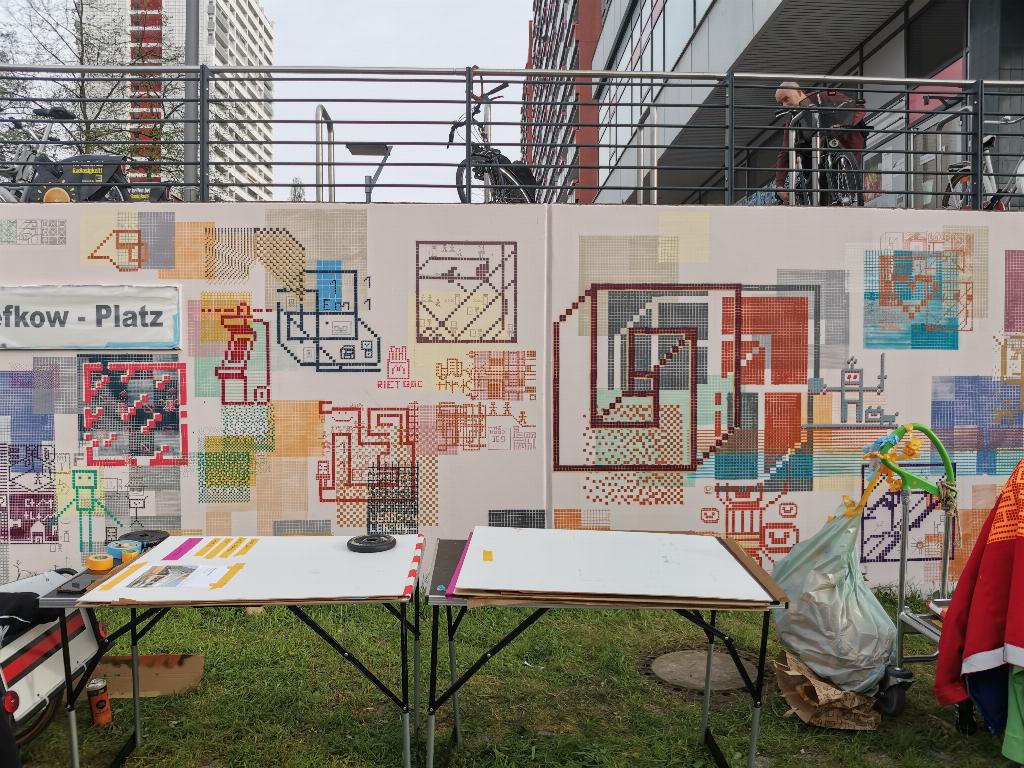
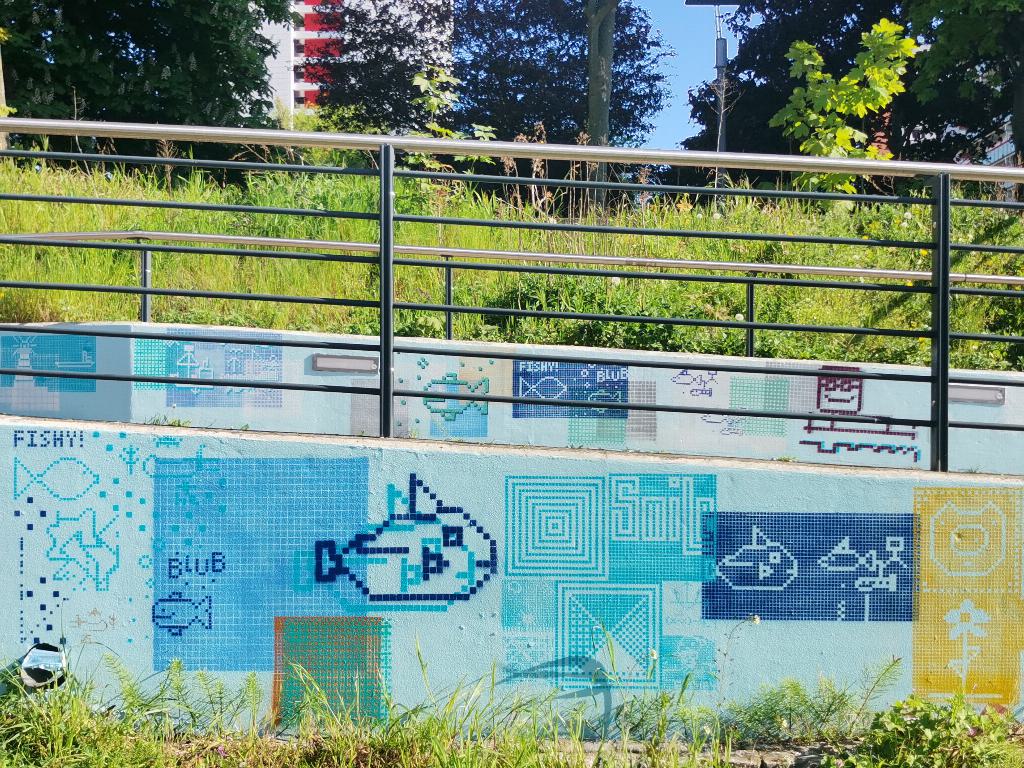
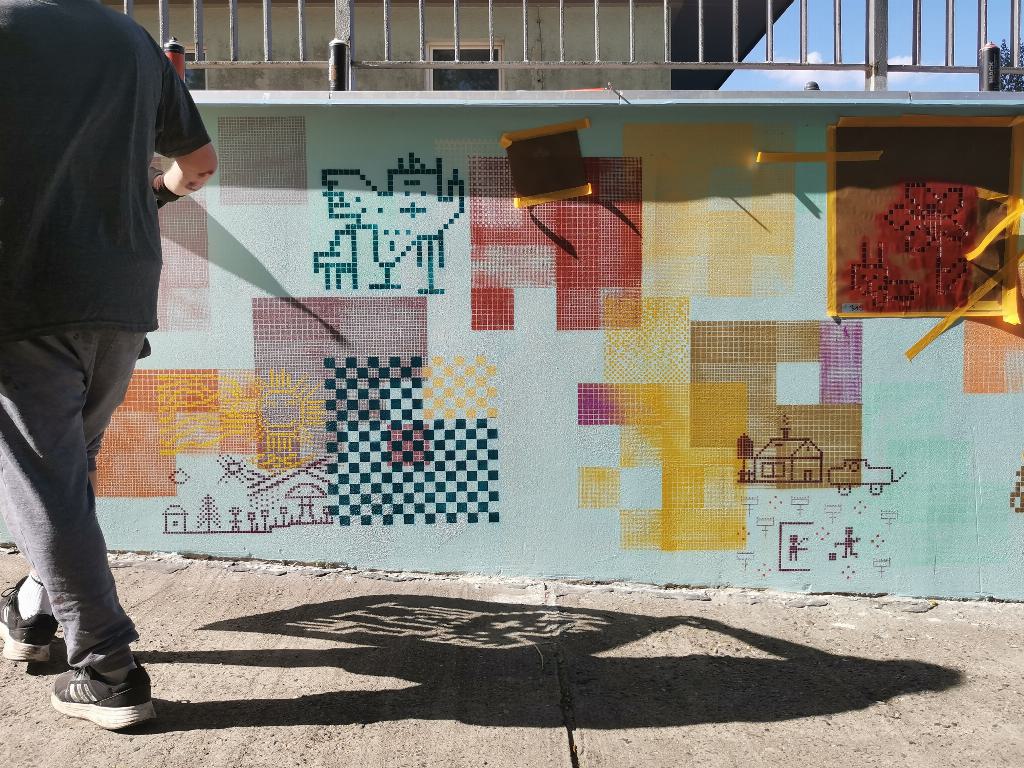
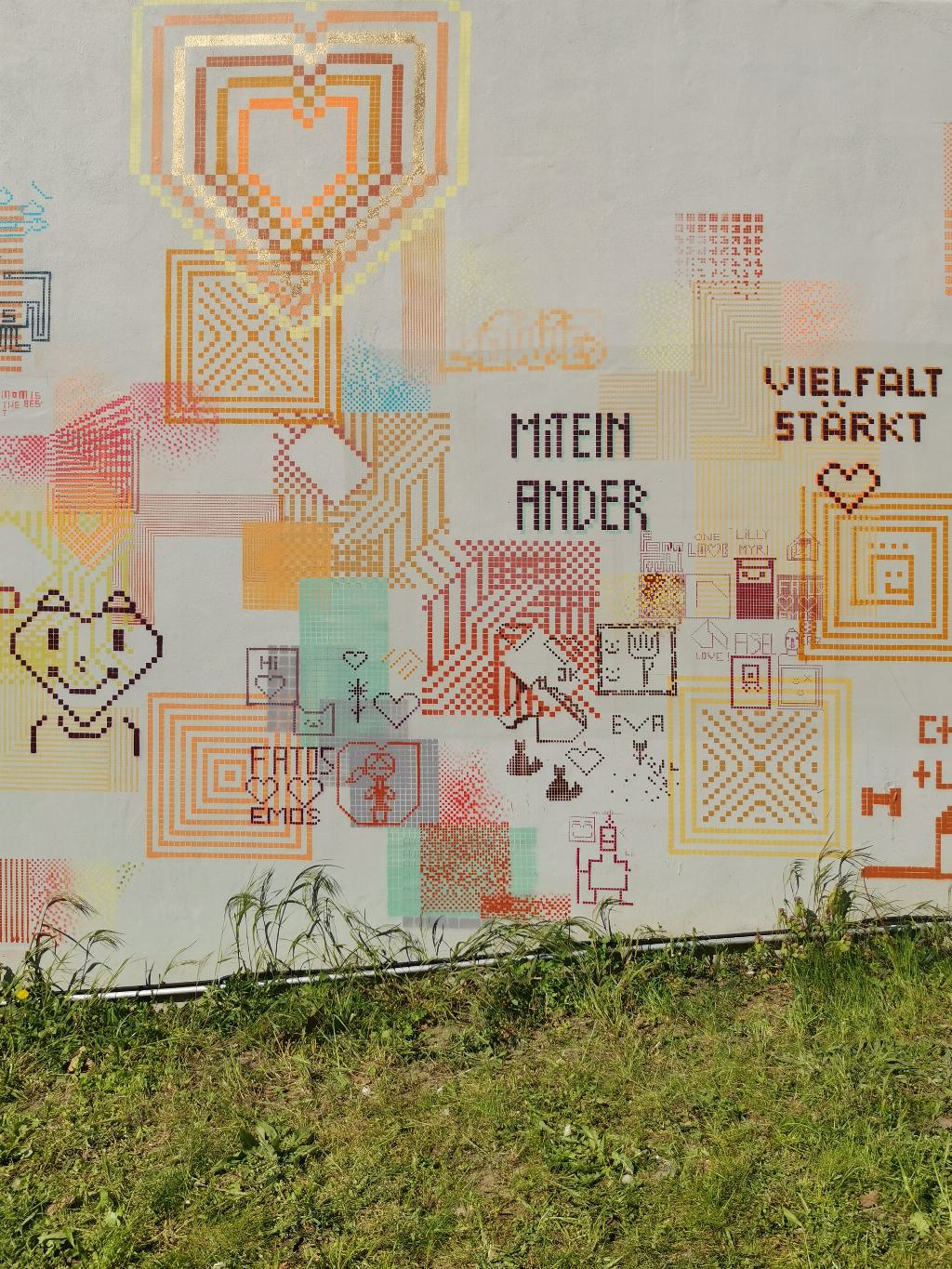
Painting all the walls took us two weeks. During that time, we continued to open the Mosaic arcade in the tiny house on a regular basis and we also moved the cutting plotter there. Neighbors could design a mosaic with the machine, and Paul would plot it immediately. Those interested could spray their stencils themselves. The local public TV station came over to report on the project, the district's mayor also paid us a visit and we got very positive feedback from the residents. Now, our biggest concern was whether our artwork would remain untouched, at least until its official inauguration.
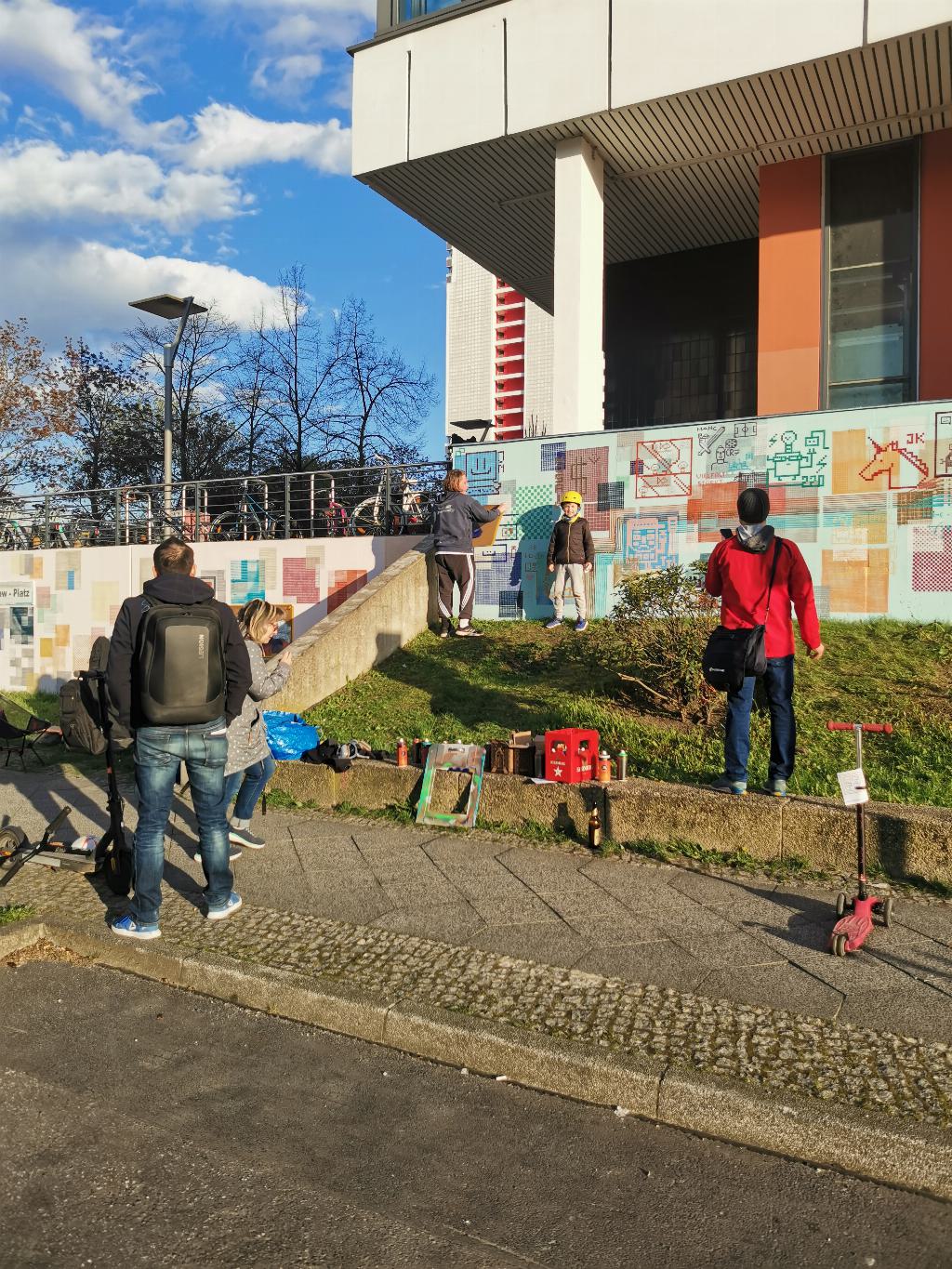
The inauguration
A few days later, we held a small, joyful opening ceremony. The housing association provided drinks, Kieztreff ReLAX, a local meeting spot, brought their popcorn machine and a local politician gave a speech. Many neighbors joined us to celebrate the fresh artwork. Together, we had a tour around the entire square and everyone tried to spot their own creations. It was clear that the Maschinenmosaik, full of colors, shapes and stories, resonated well with the locals, fostering a stronger sense of connection in the community.
I was a nice party, honoring the collective effort that went into creating the mosaic murals. Our worries that someone would spray over our artwork didn't come true. As of the time of writing this, several months later in fall 2023, new graffiti has popped up at different spots all around the square, but the walls we painted were still (mostly) untouched.
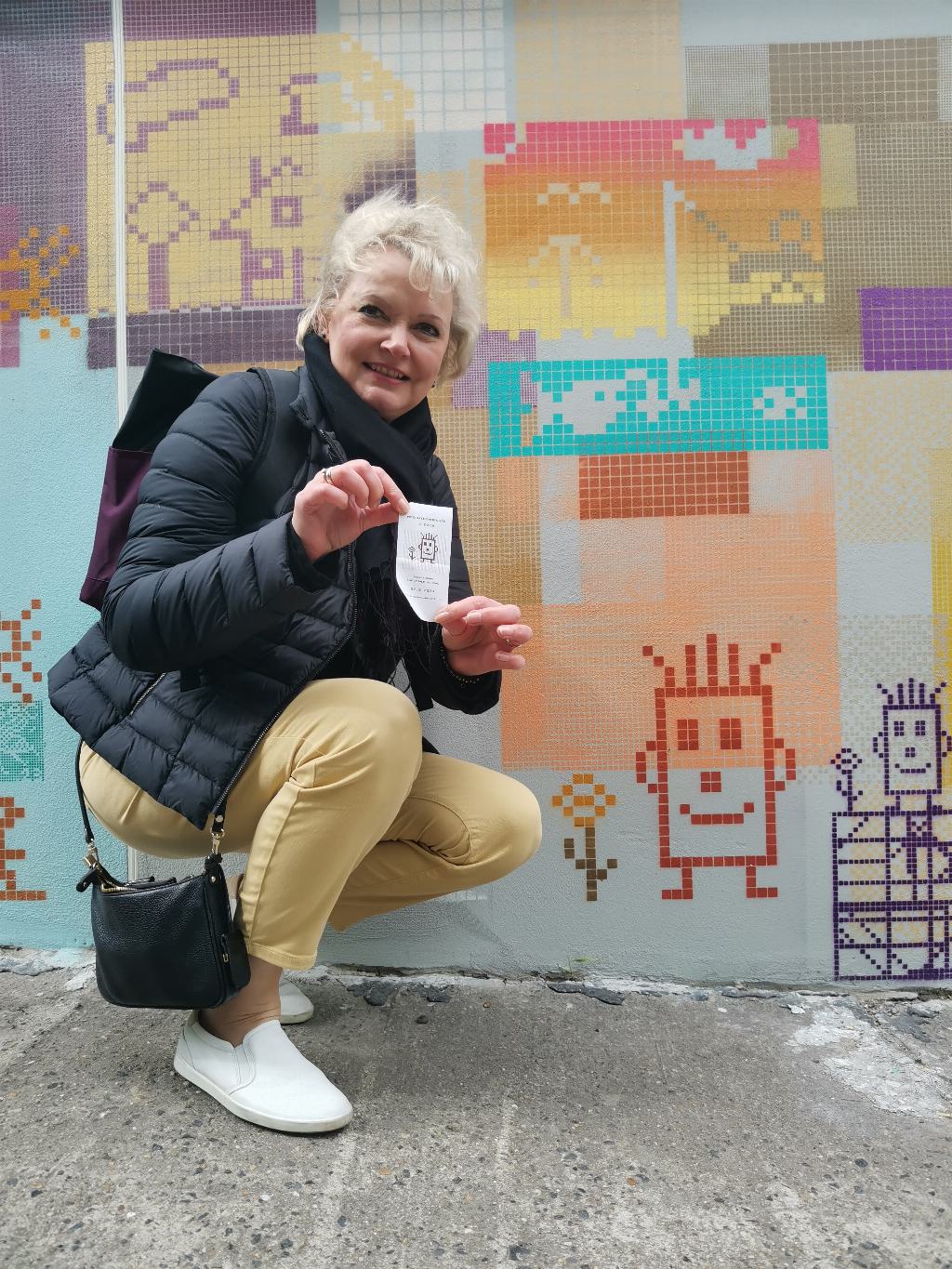
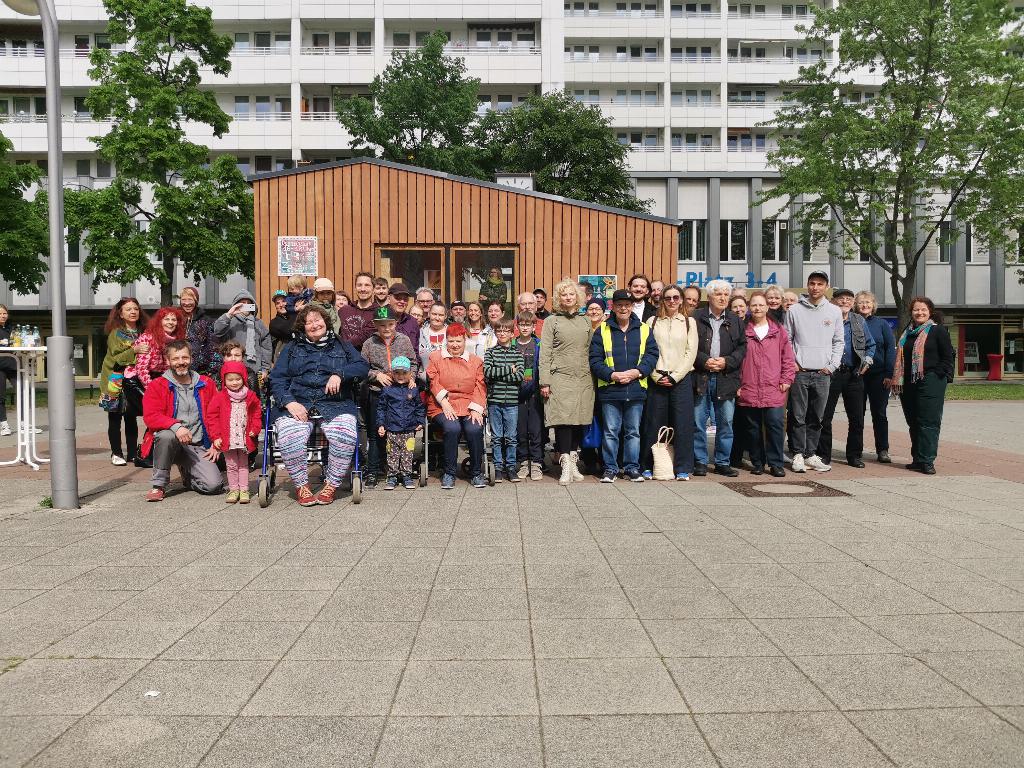
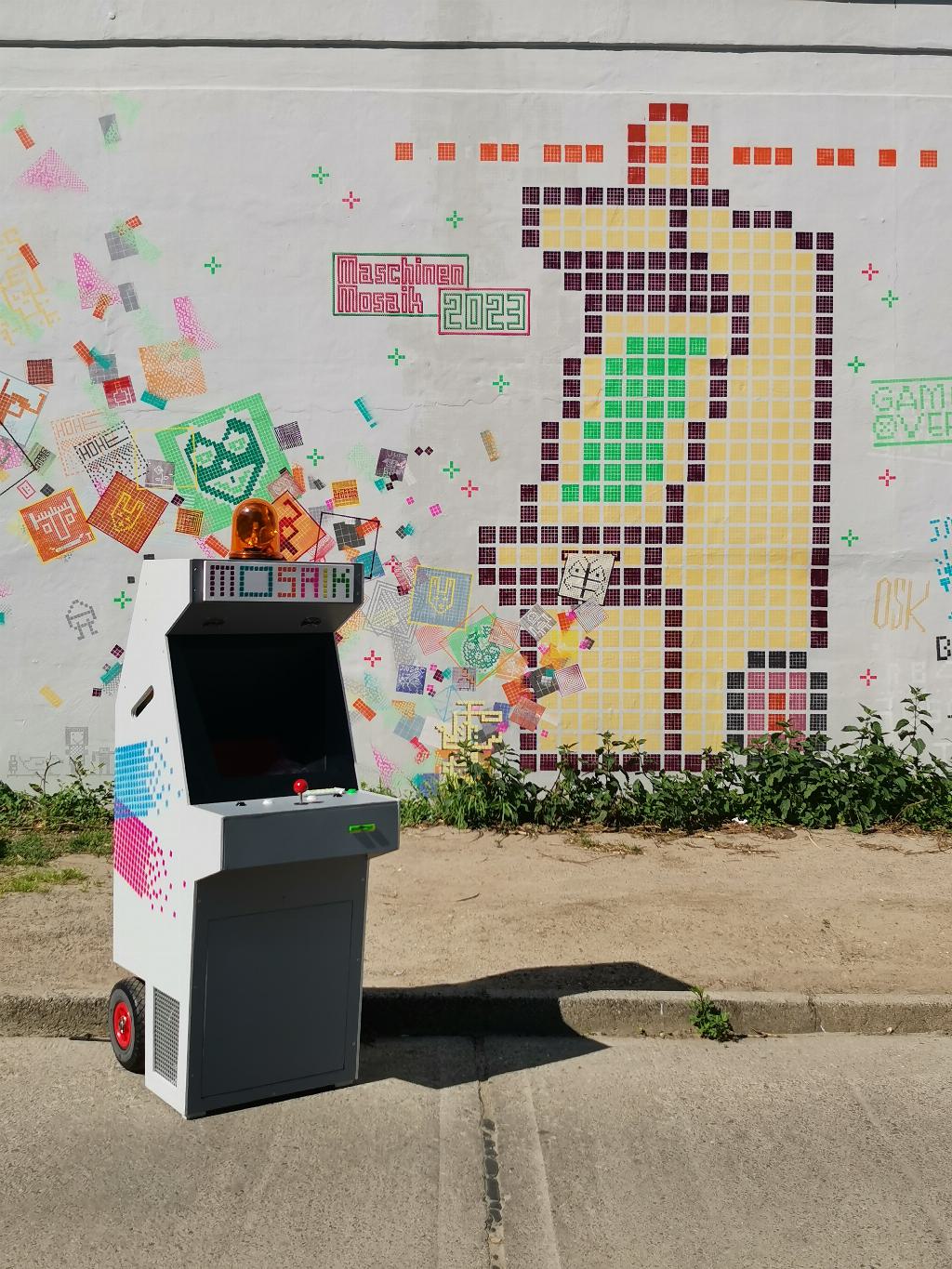
Thanks & Credits
The project was organized by Bezirksamt Lichtenberg and HOWOGE Wohnungsbaugesellschaft mbH. It was funded by Berlin's Senatsverwaltung für Kultur und Europa.
Many people and organizations contributed to the success of this project and I want to thank all of them: Paul for mediating the machine and for managing the plotter in the tiny house, Kati for designing, plotting and sorting tons of stencils, Olli for cleaning the walls, Jana, Sebastian, Johanna and Simon for their graffiti expertise and for designing and spraying the wall paintings.
I also want to thank Katrin Röseler-Soult from Bezirksamt Lichtenberg, Rainer Bosse and Bürgerverein Fennpfuhl, Petra Grampe, Steffen Liebmann, Wiebke Rosenheinrich, Thomas Oberender and Jörg Werner from HOWOGE, Benjamin Brettschneider and Kieztreff ReLAX, Tim Kegler, Van Bo Le-Mentzel, Stephan Naujoks, Wolfgang Naujoks, Regina Maria Ringhand-Militsch, Dieter Rühle, Roberto Santana Perez and der kleine Programmierer, Sebastian Sellheim, BENN Fennpfuhl, RoBertO, Anton-Saefkow-Bibliothek, blu:boks, Jugendclub Judith Auer, Hu-Ma WG4, Schwimmhalle Anton‑Saefkow‑Platz, Handsiebdruckerei Kreuzberg, Basics09, Büro für Kunst im öffentlichen Raum, and everyone who contributed a mosaic design.
Additional resources
- Project website (maschinenmosaik.de - in German)
- Mosaik archive
- SVG renderer (requires keyboard and mouse with scroll wheel)
- All project photos (diary album)
- Selected project photos (ZIP, 778MB)
- Photo book files (ZIP, 778MB)
- Hires panoramas & selected details (ZIP, 759MB)
- All Javascript, PHP and Arduino codes (ZIP, 543MB)
- Sketchup model of the Mosaikmaschine (ZIP, 978KB)
- Video in high quality on archive.org